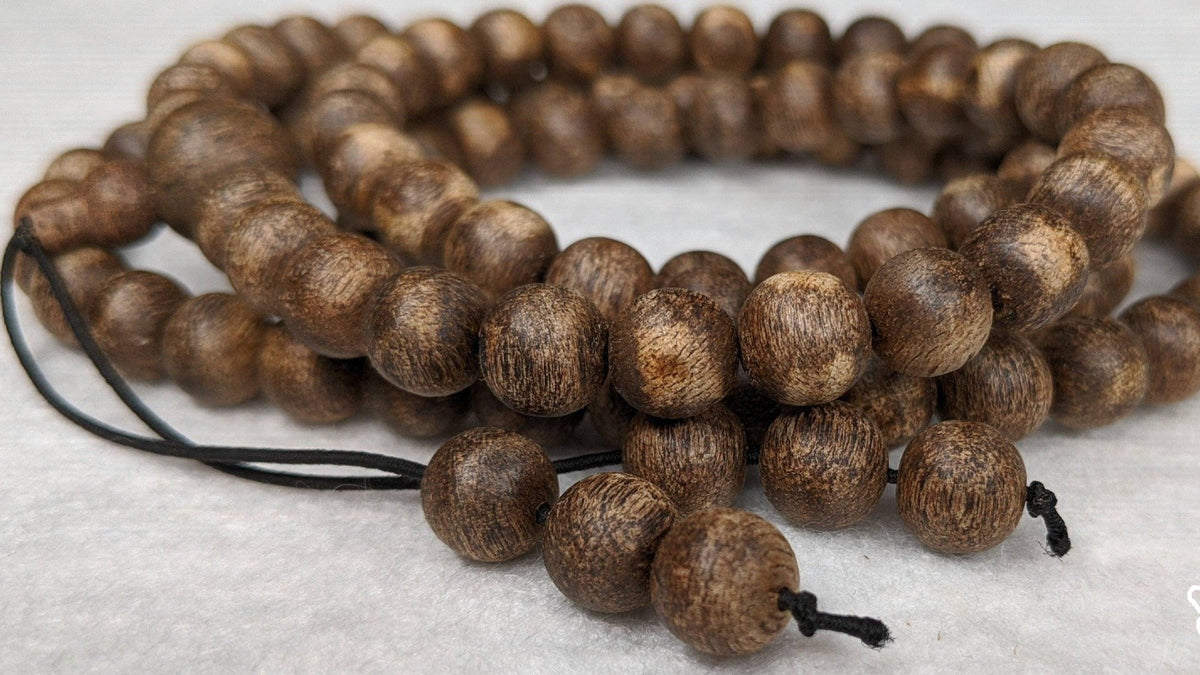
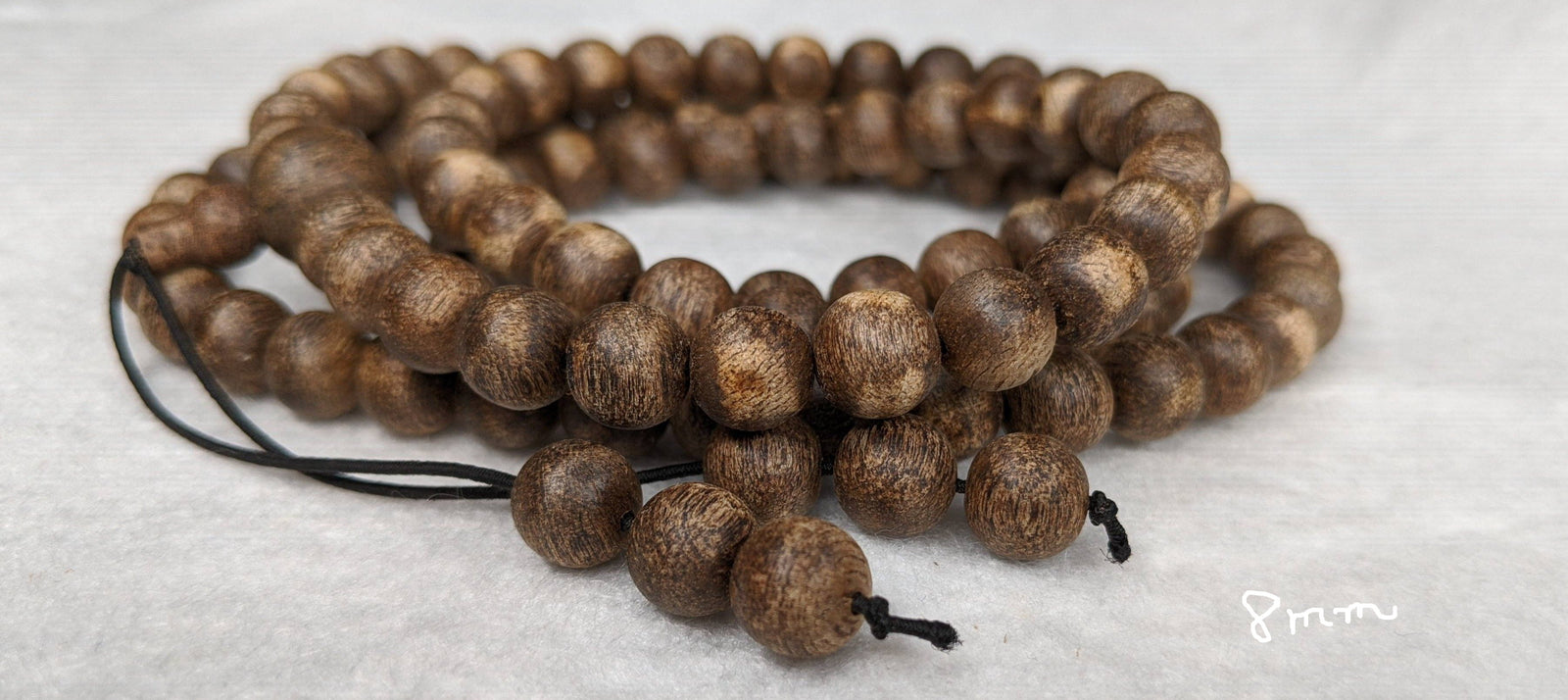
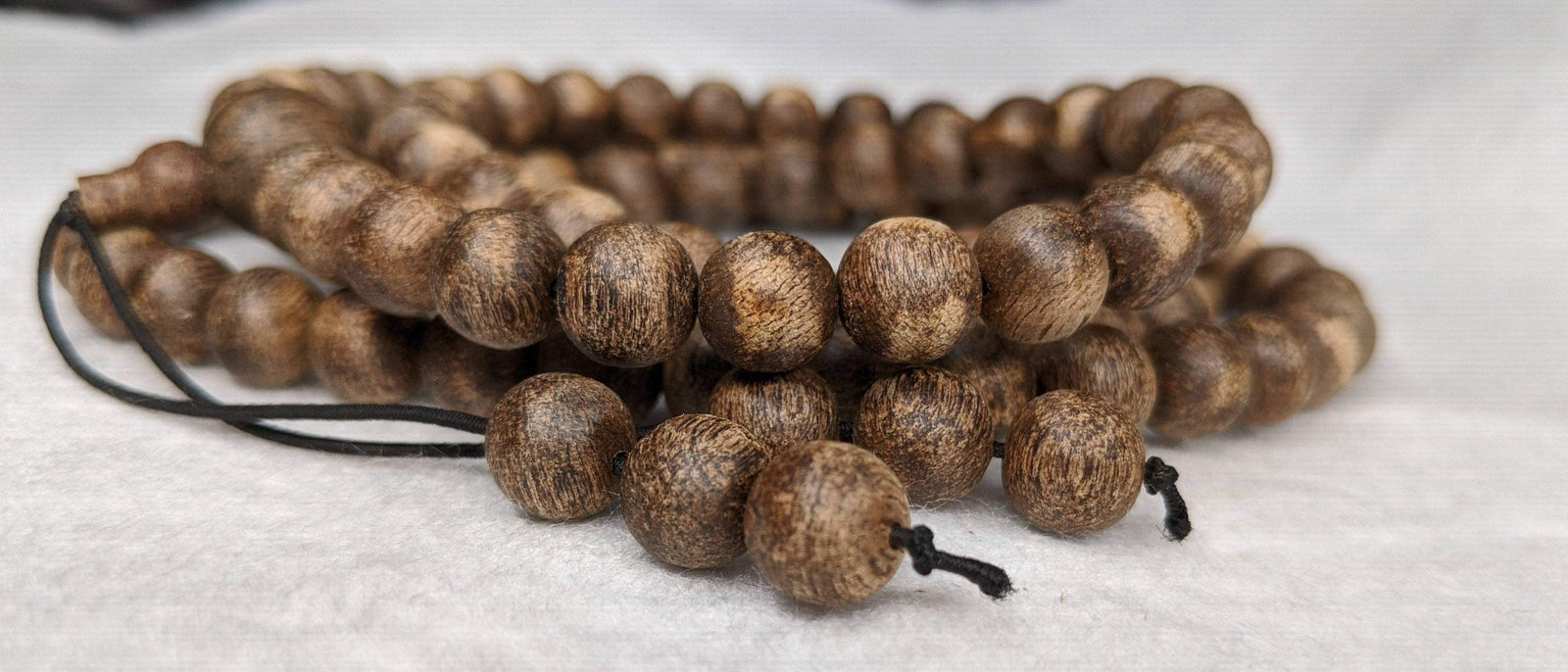
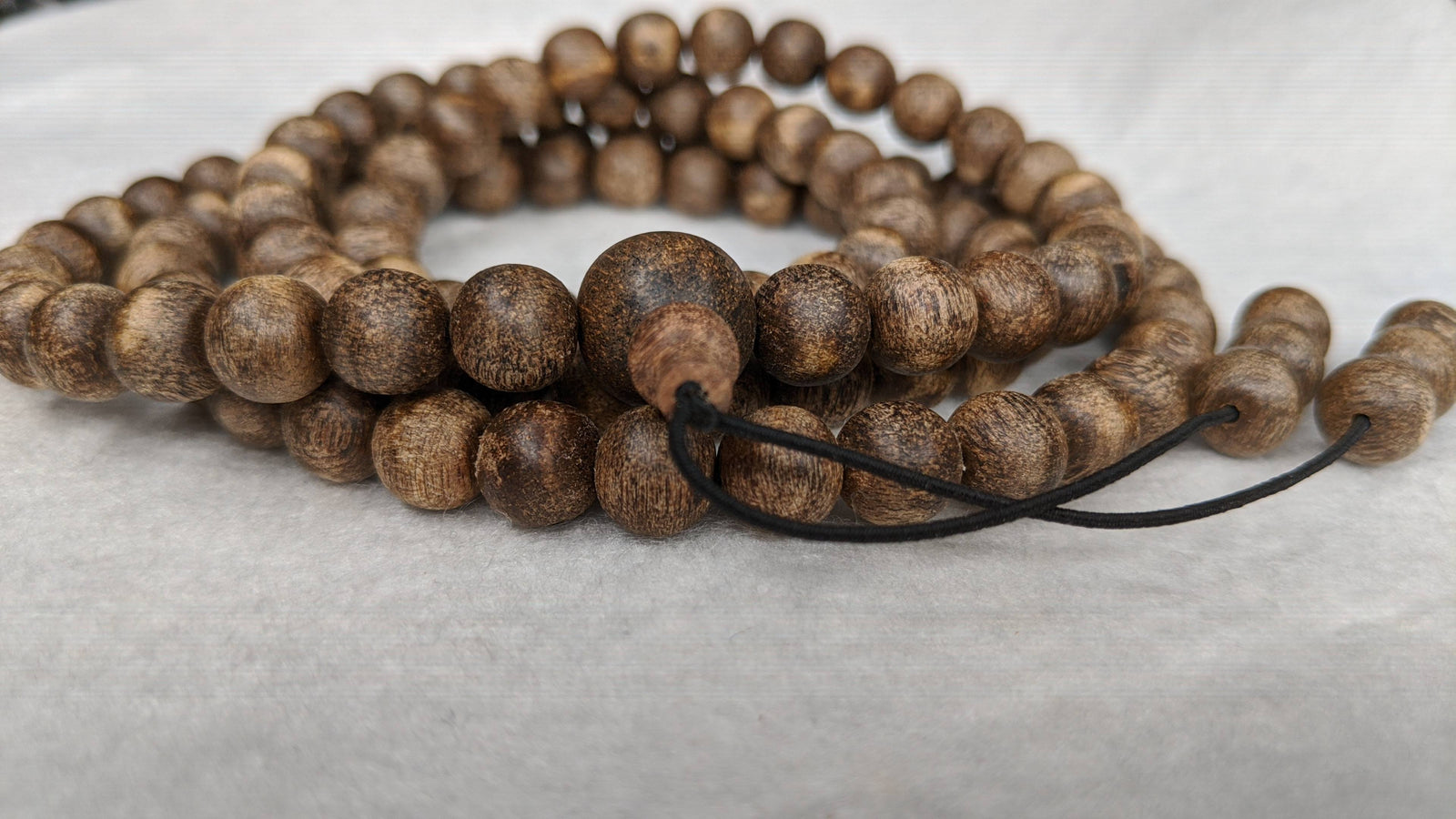
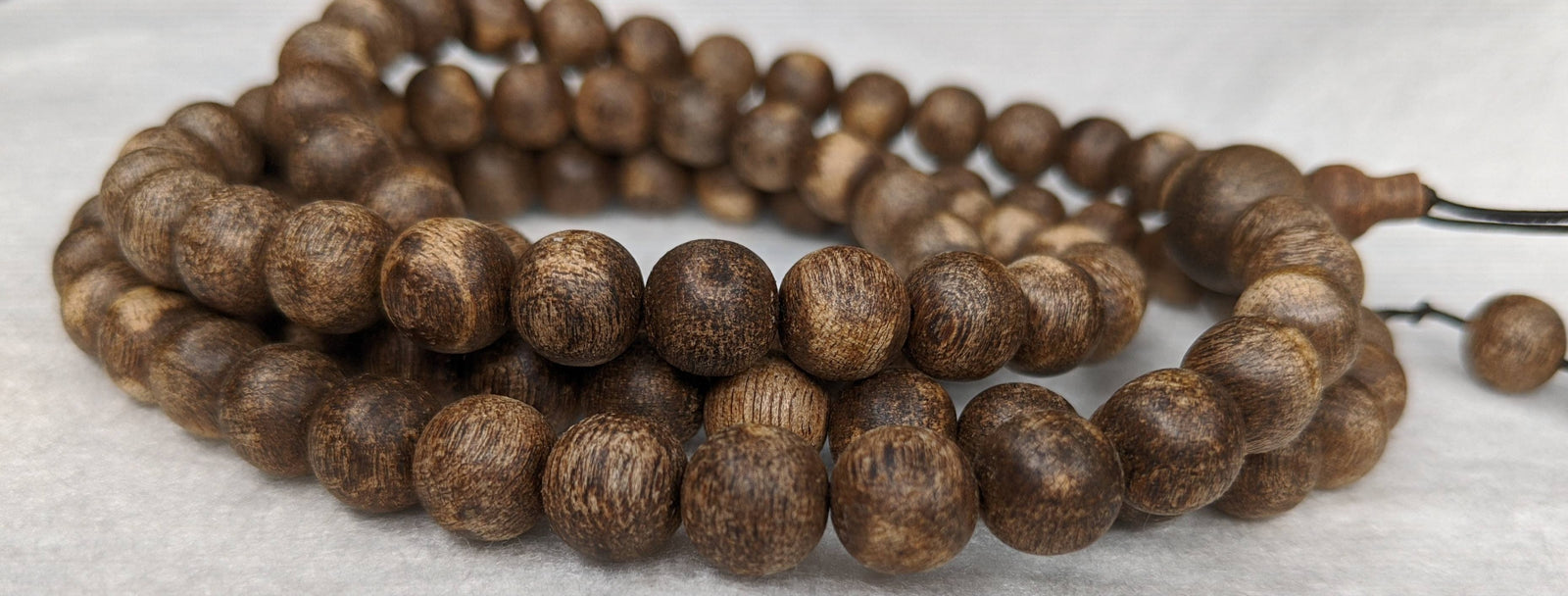
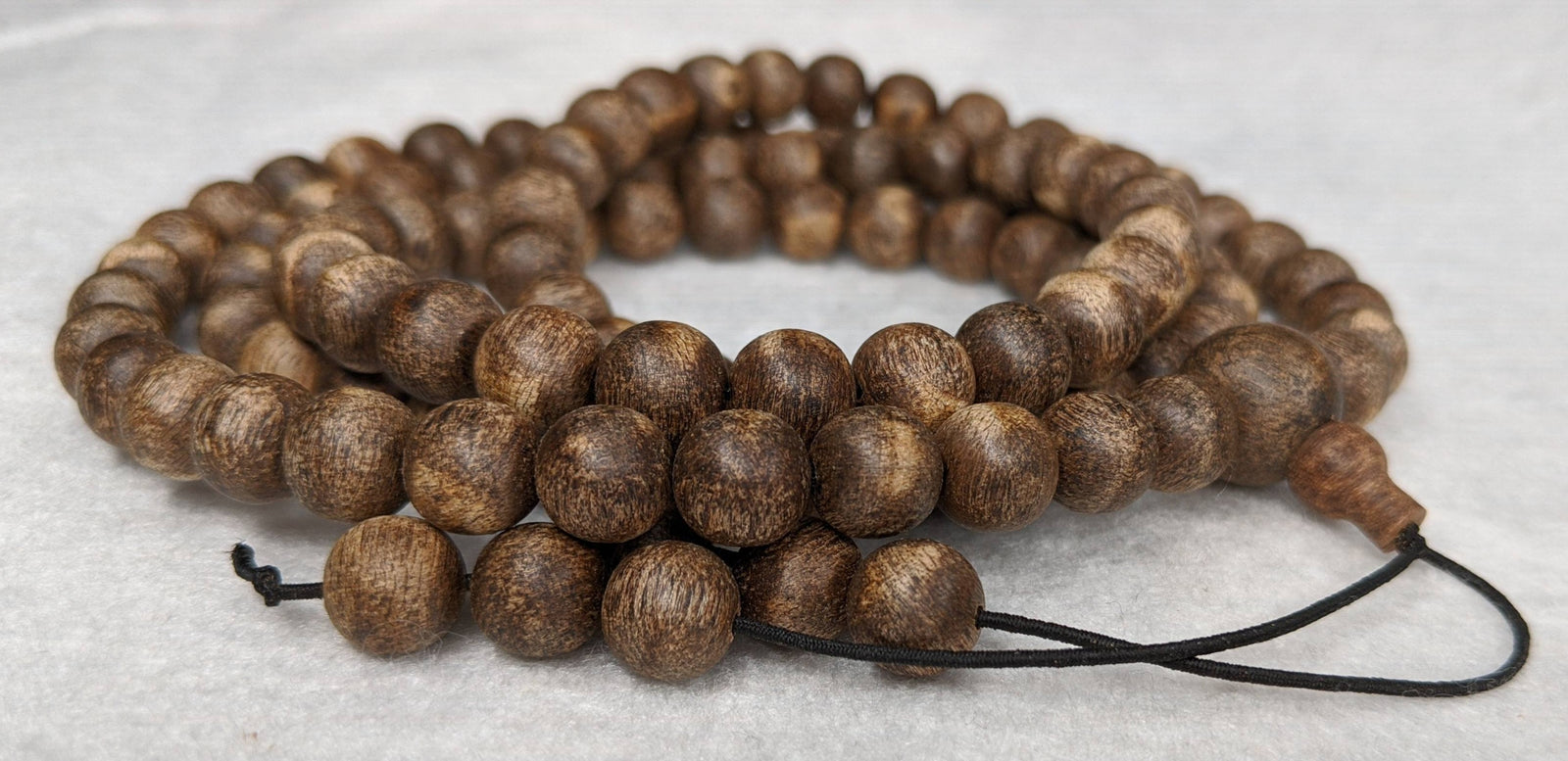
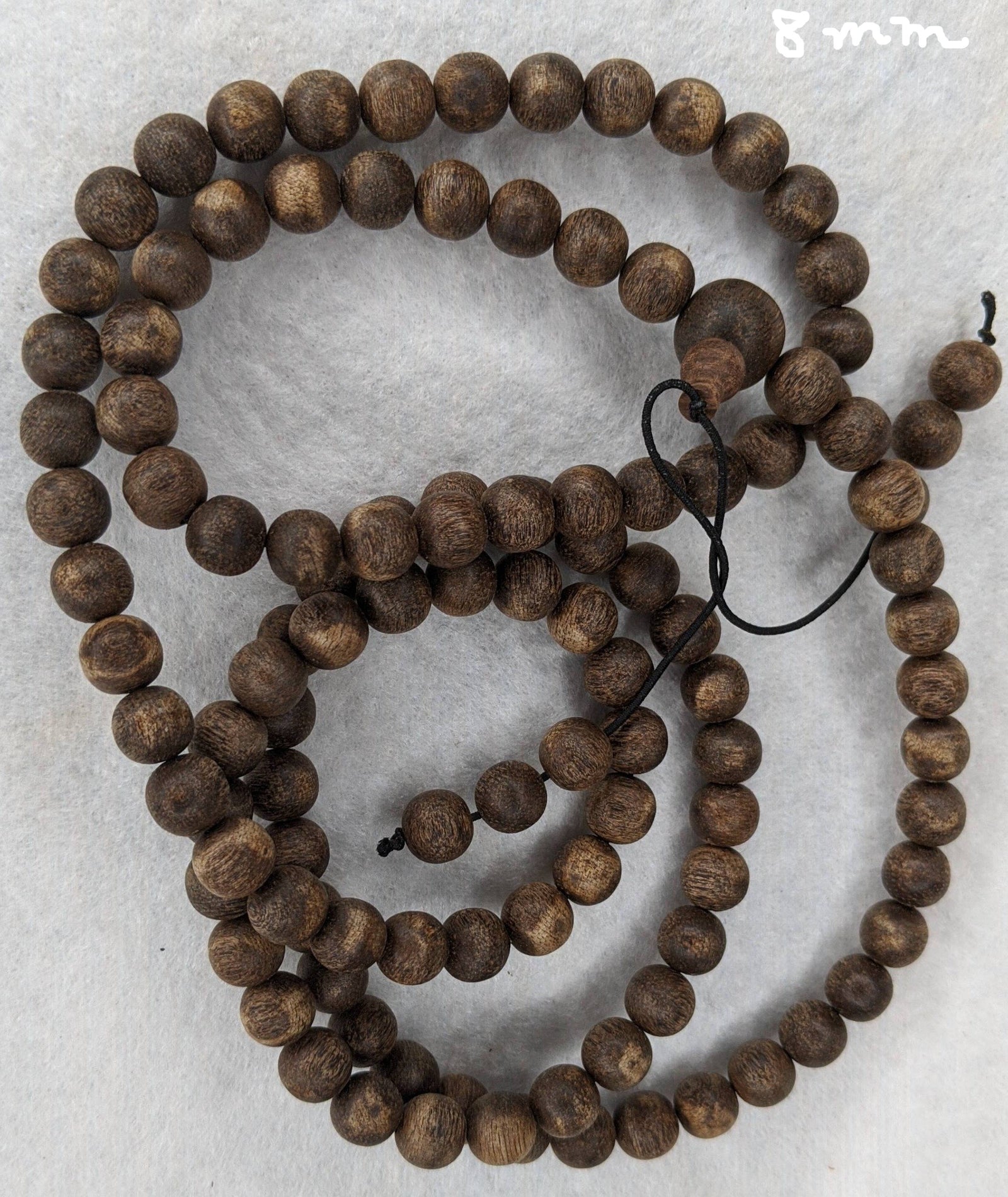
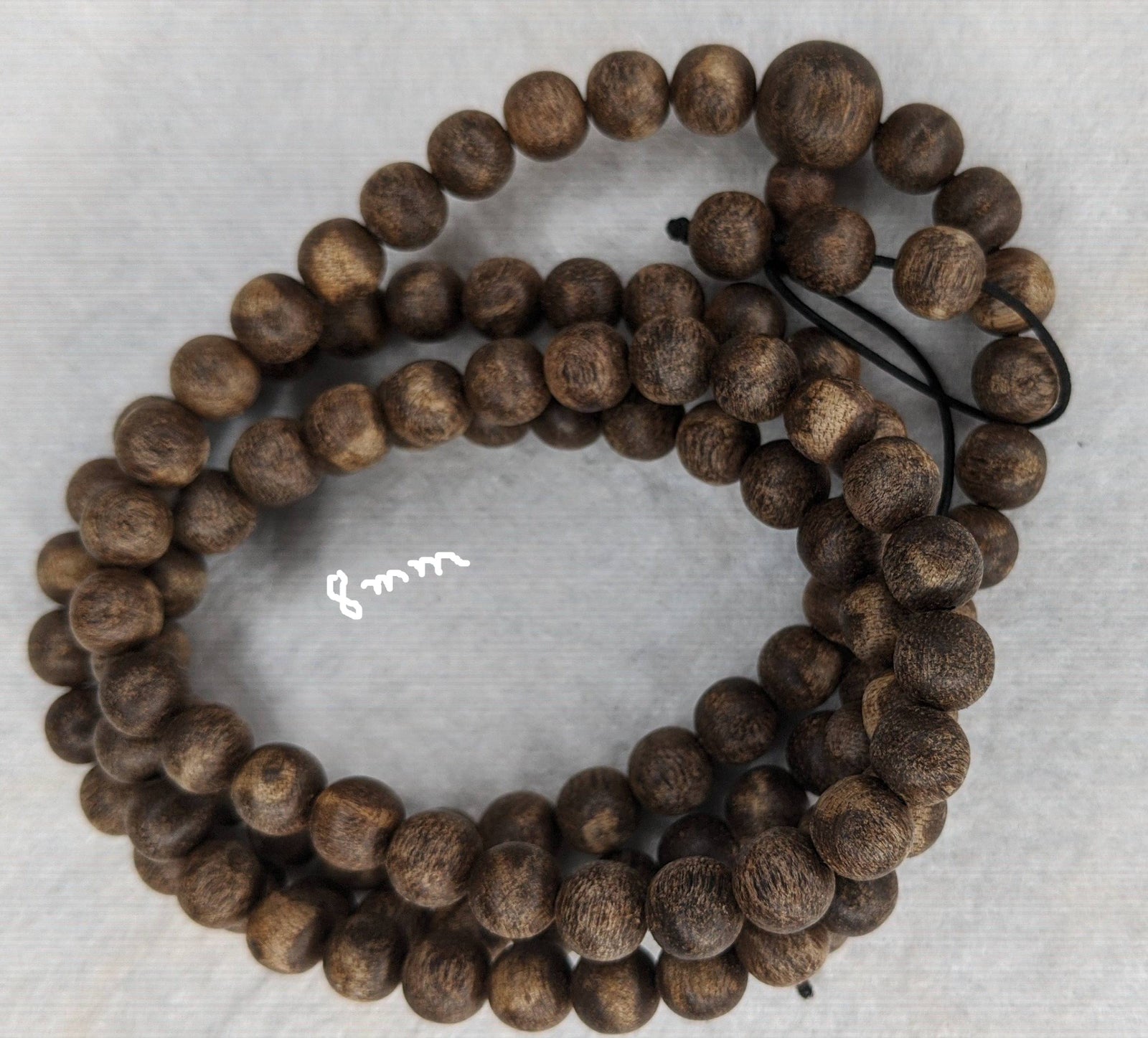
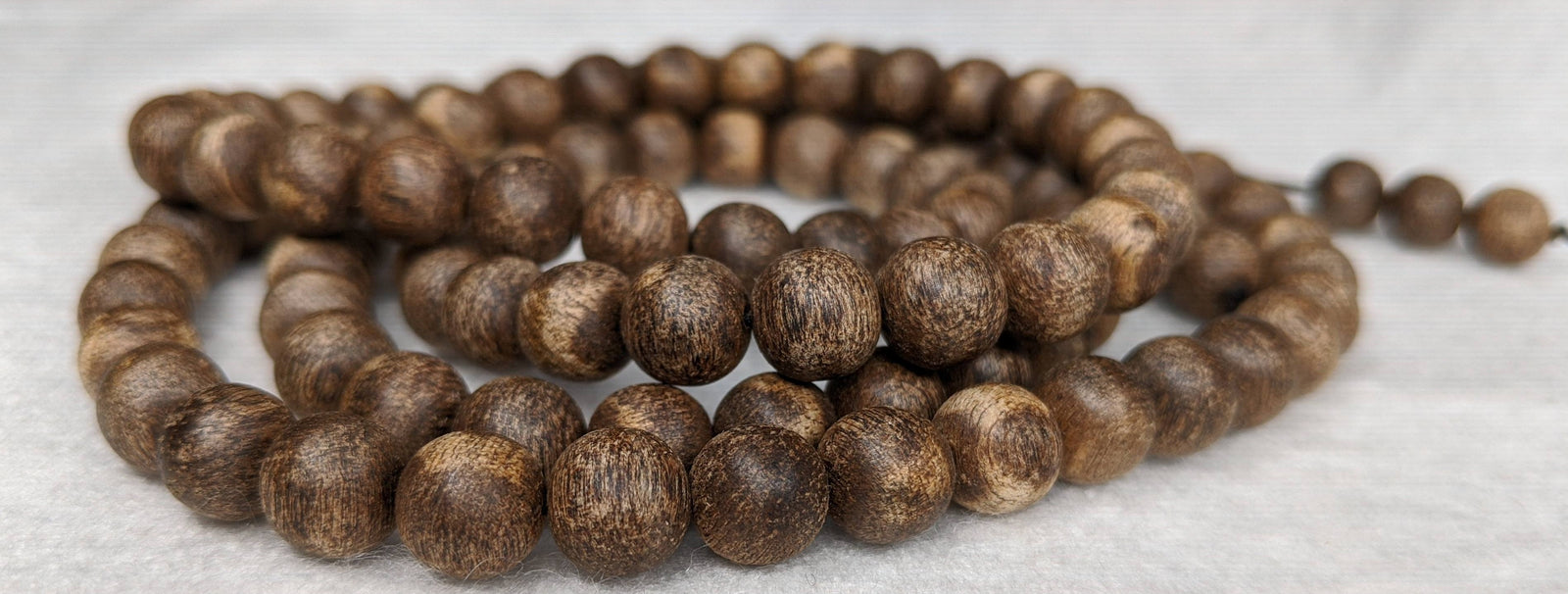
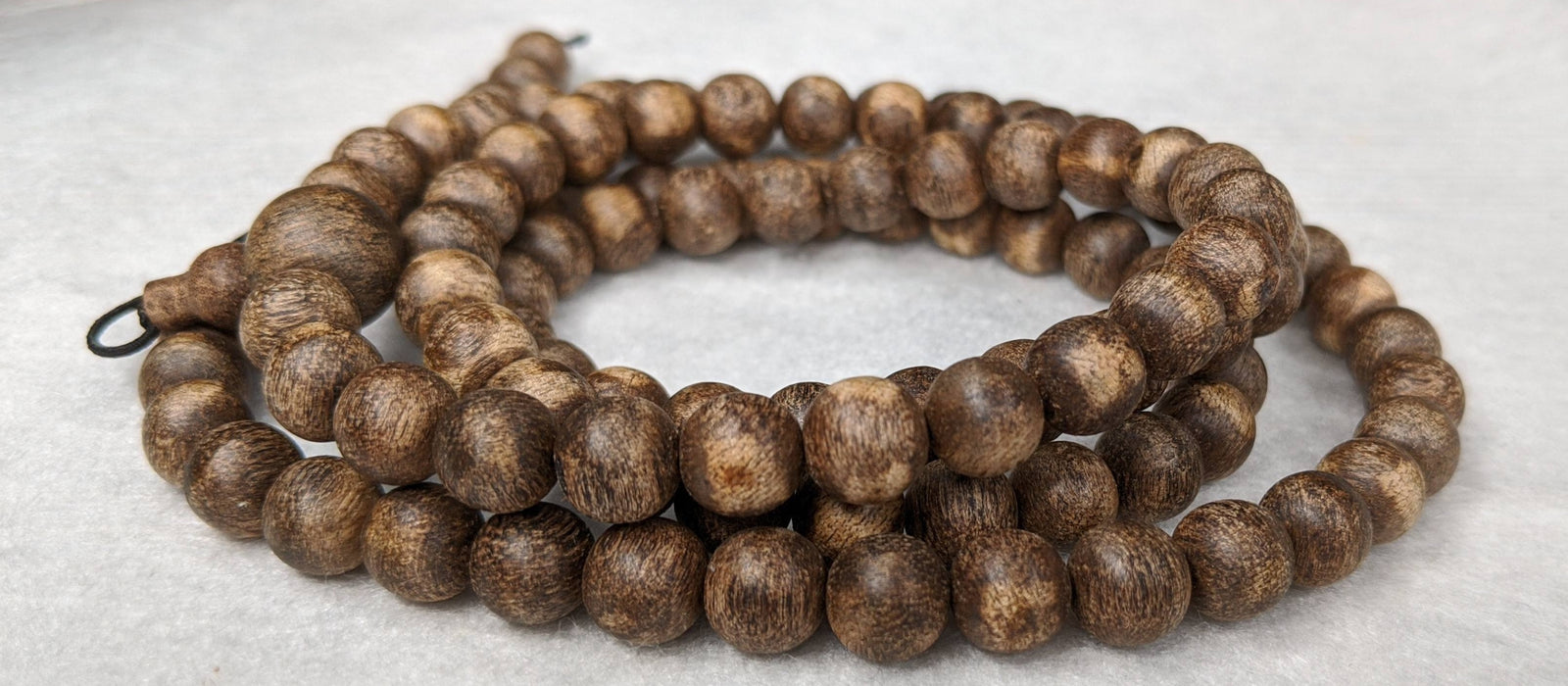
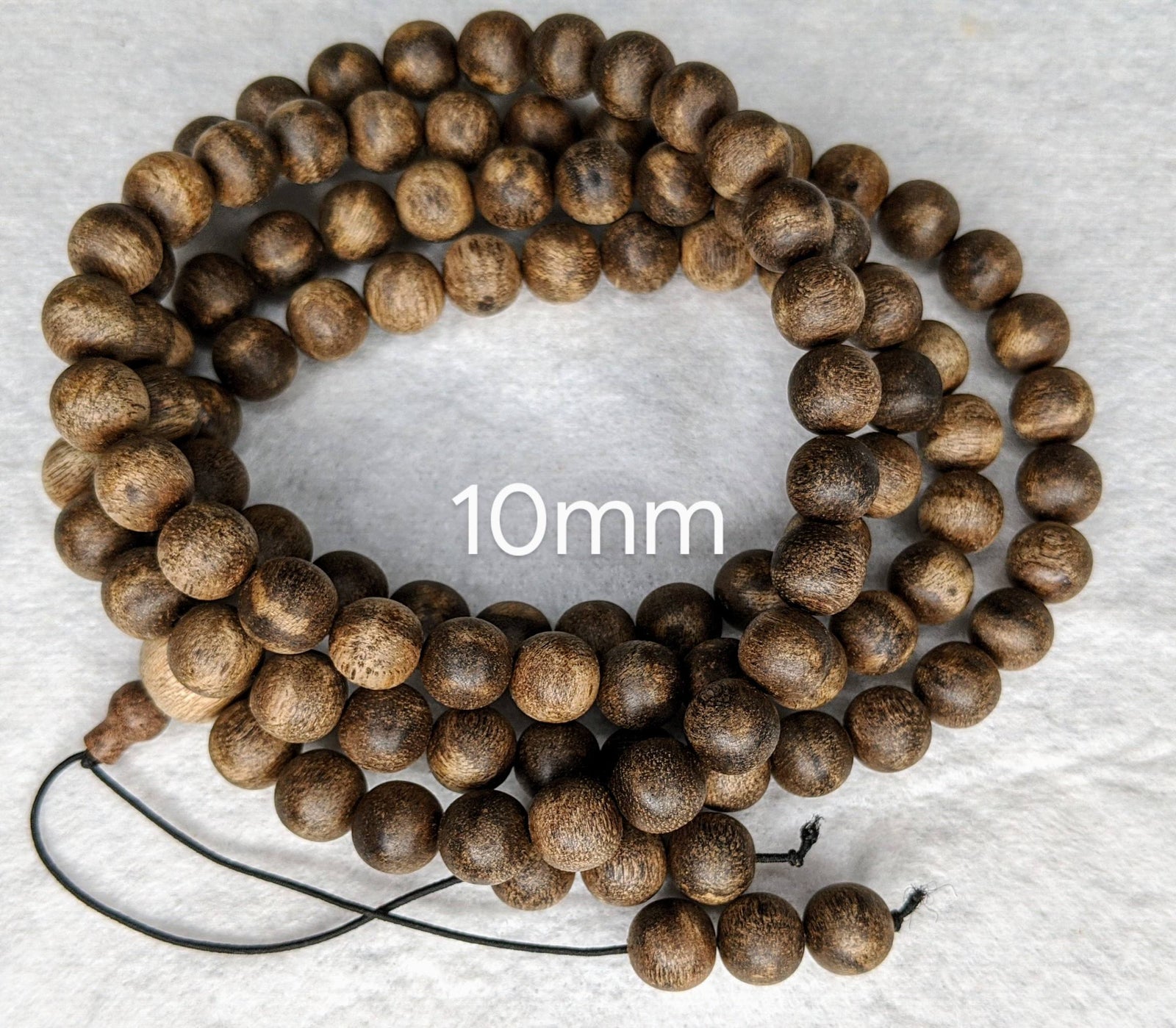
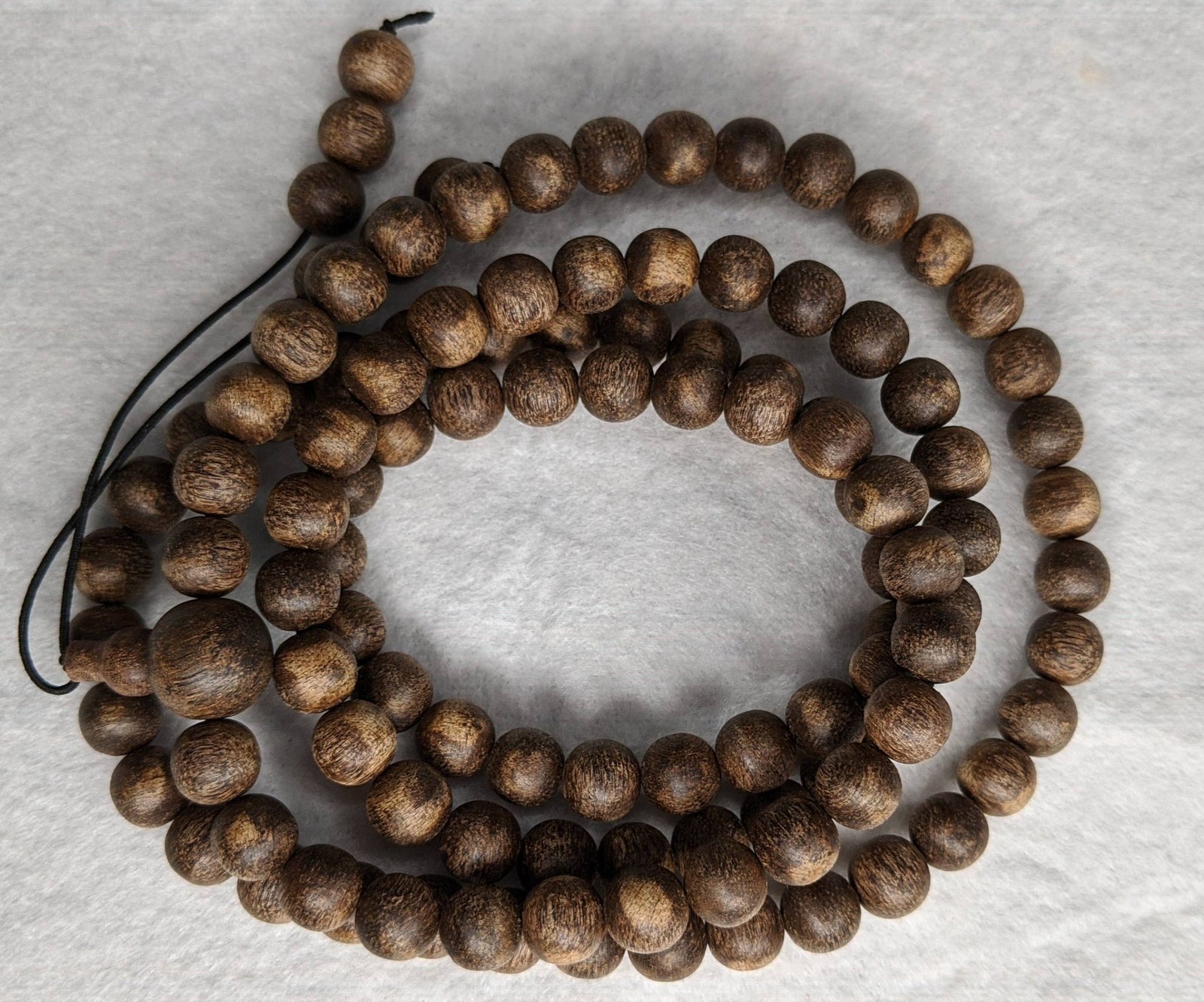
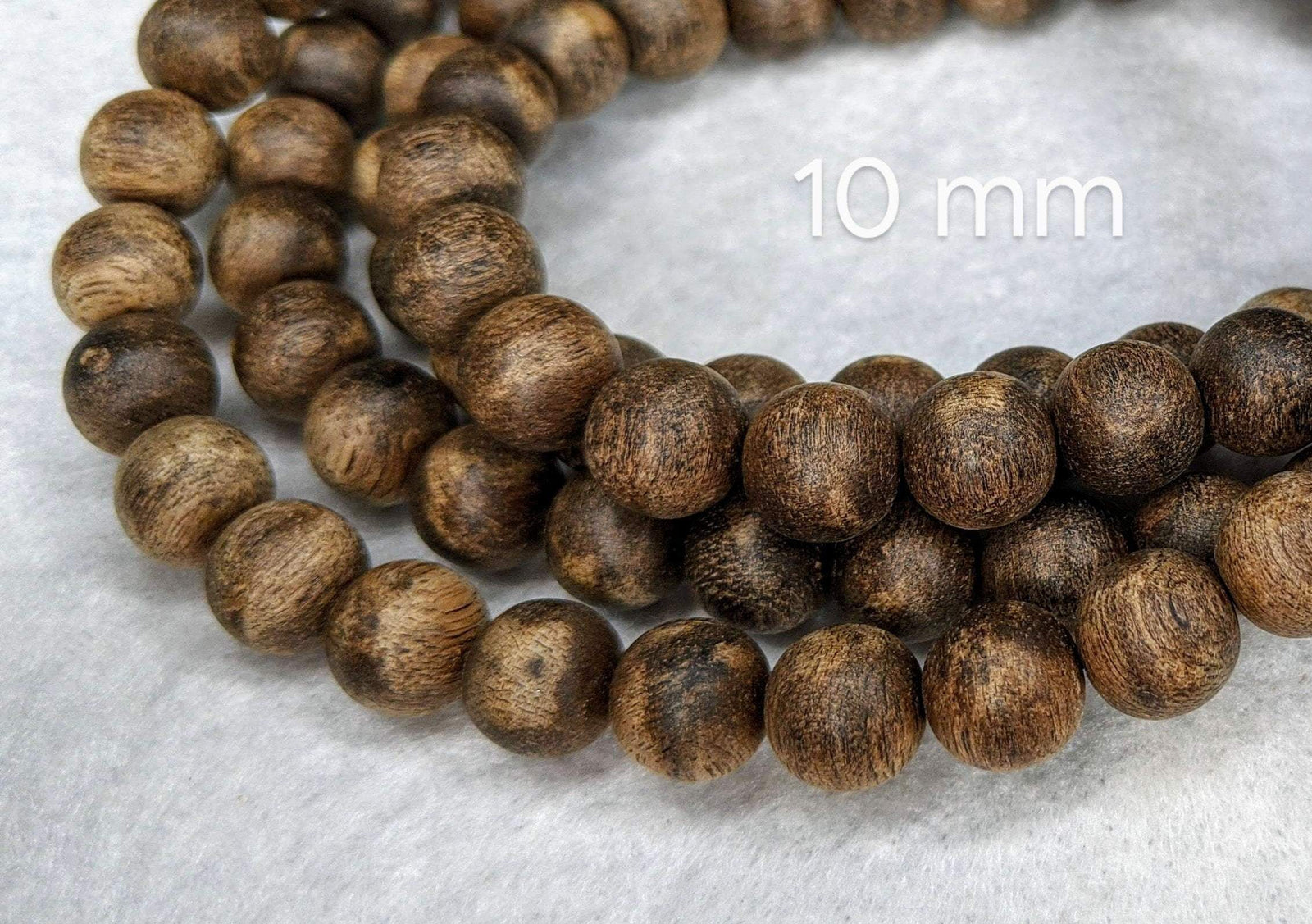
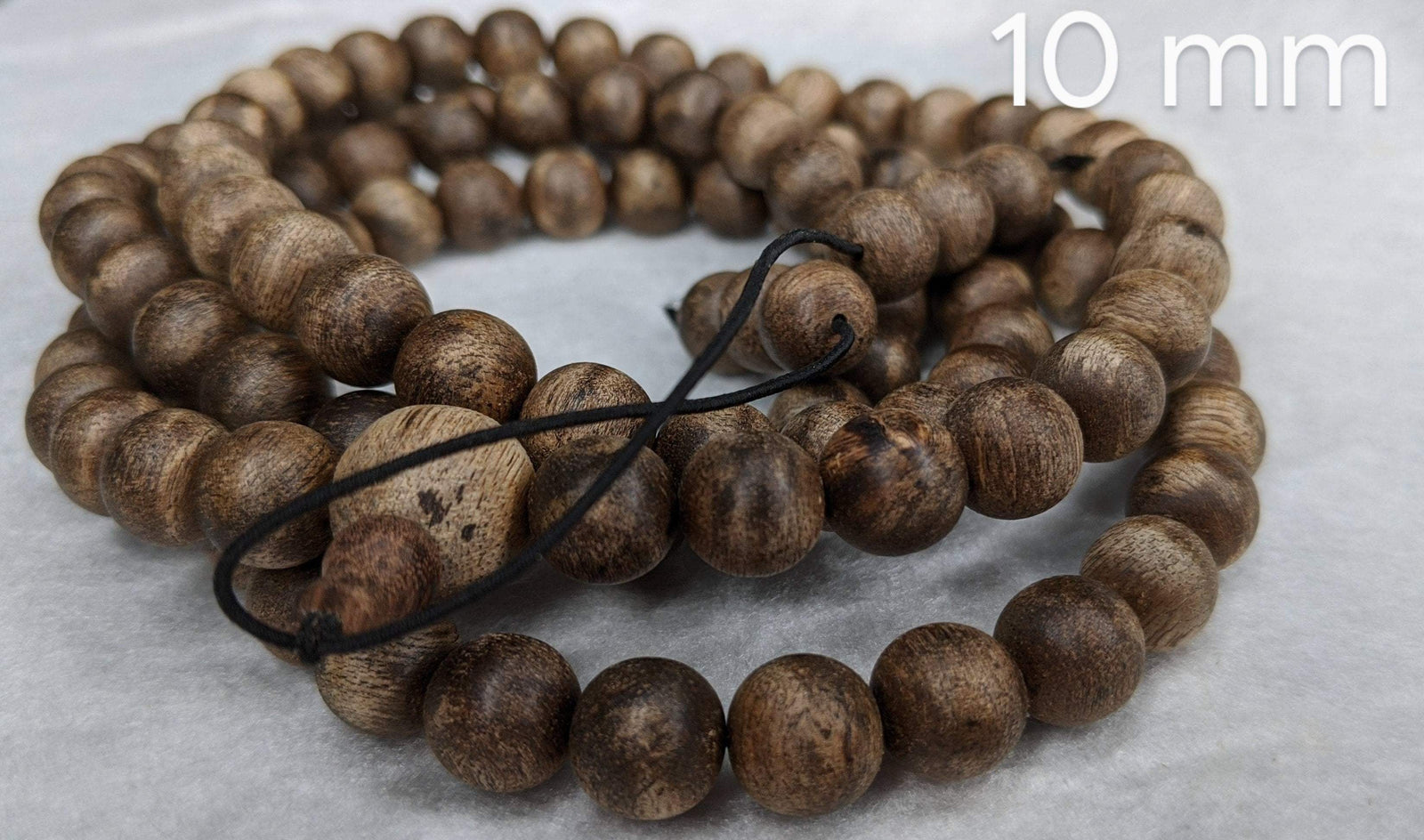
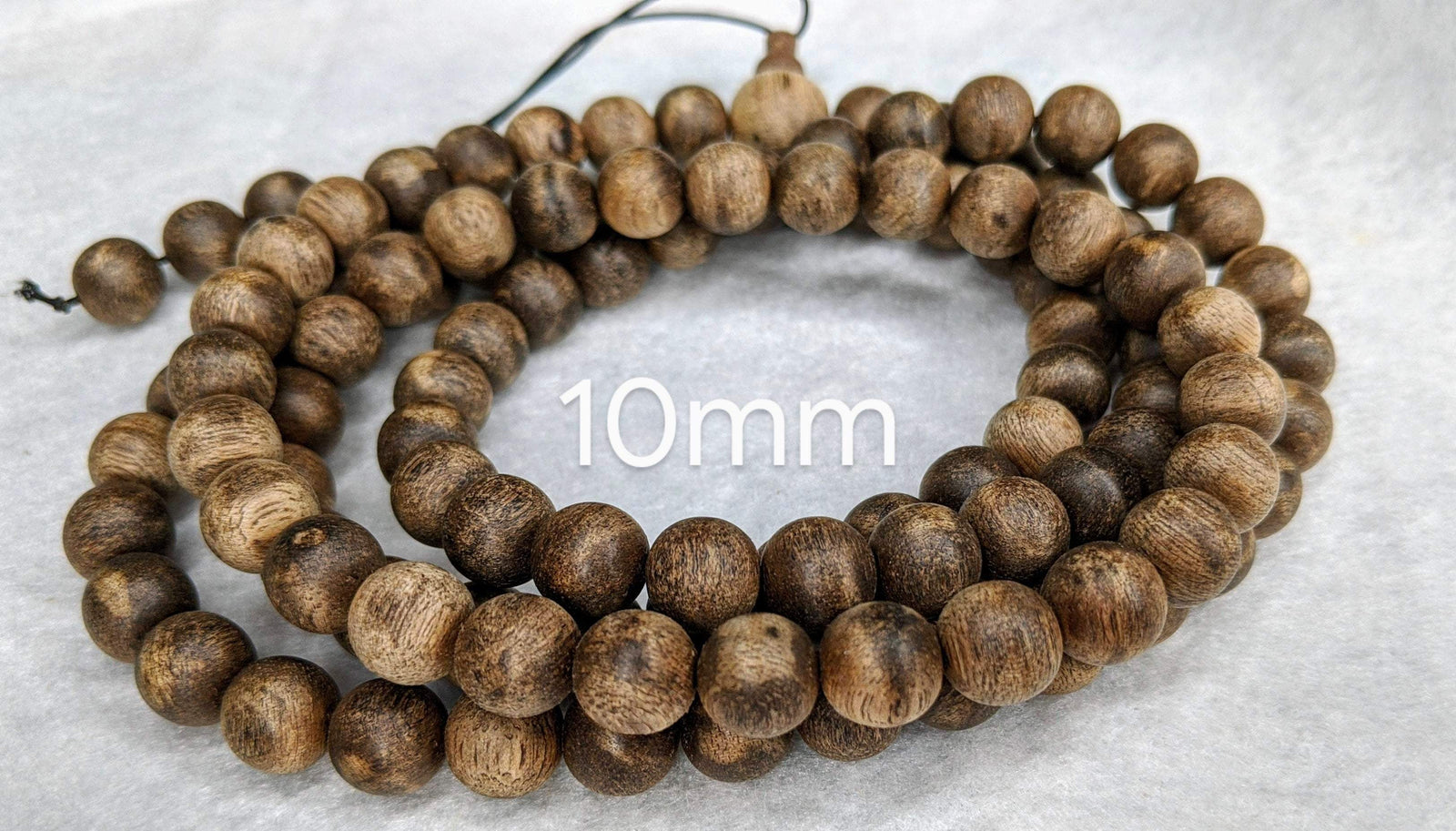
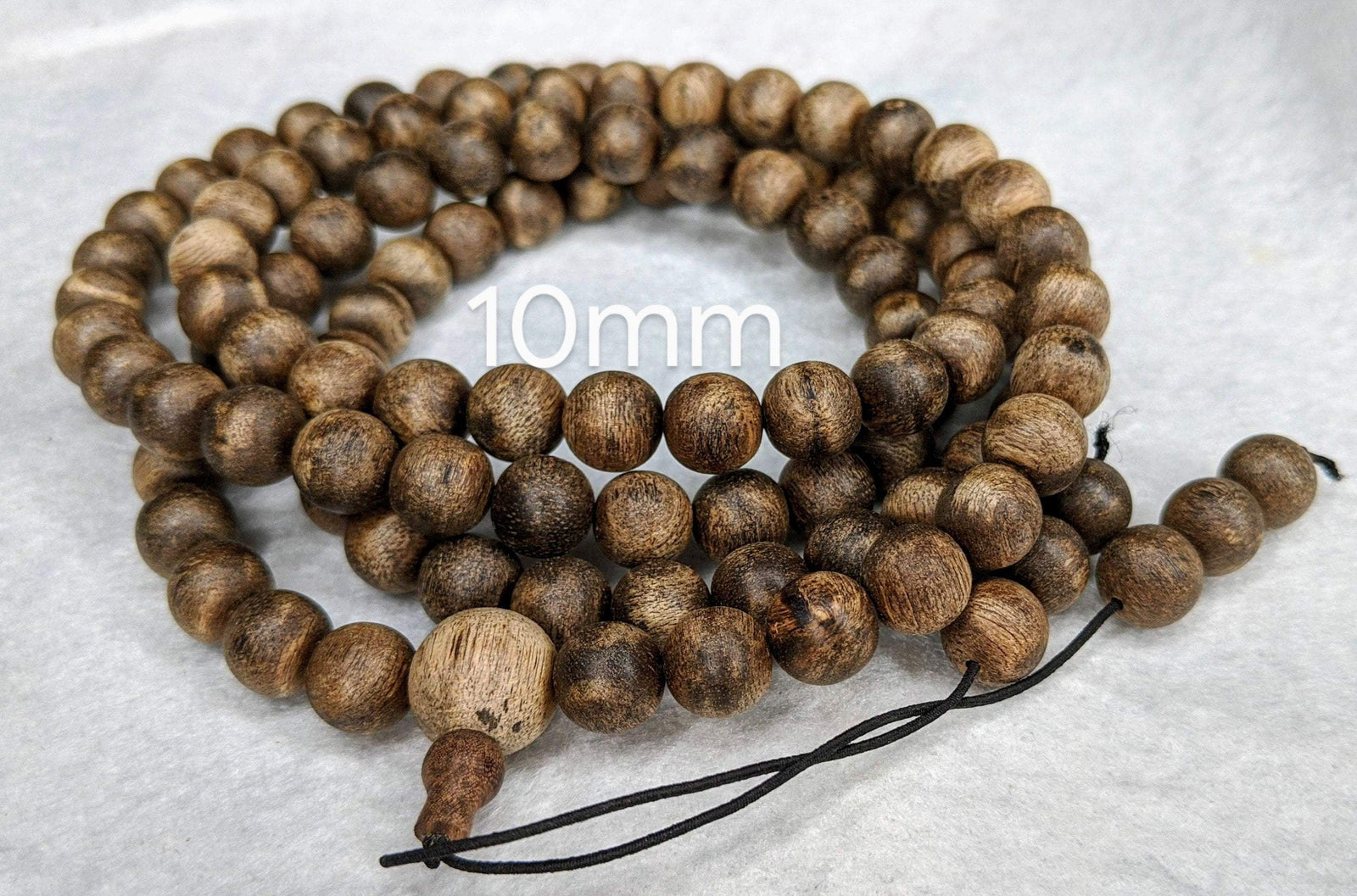
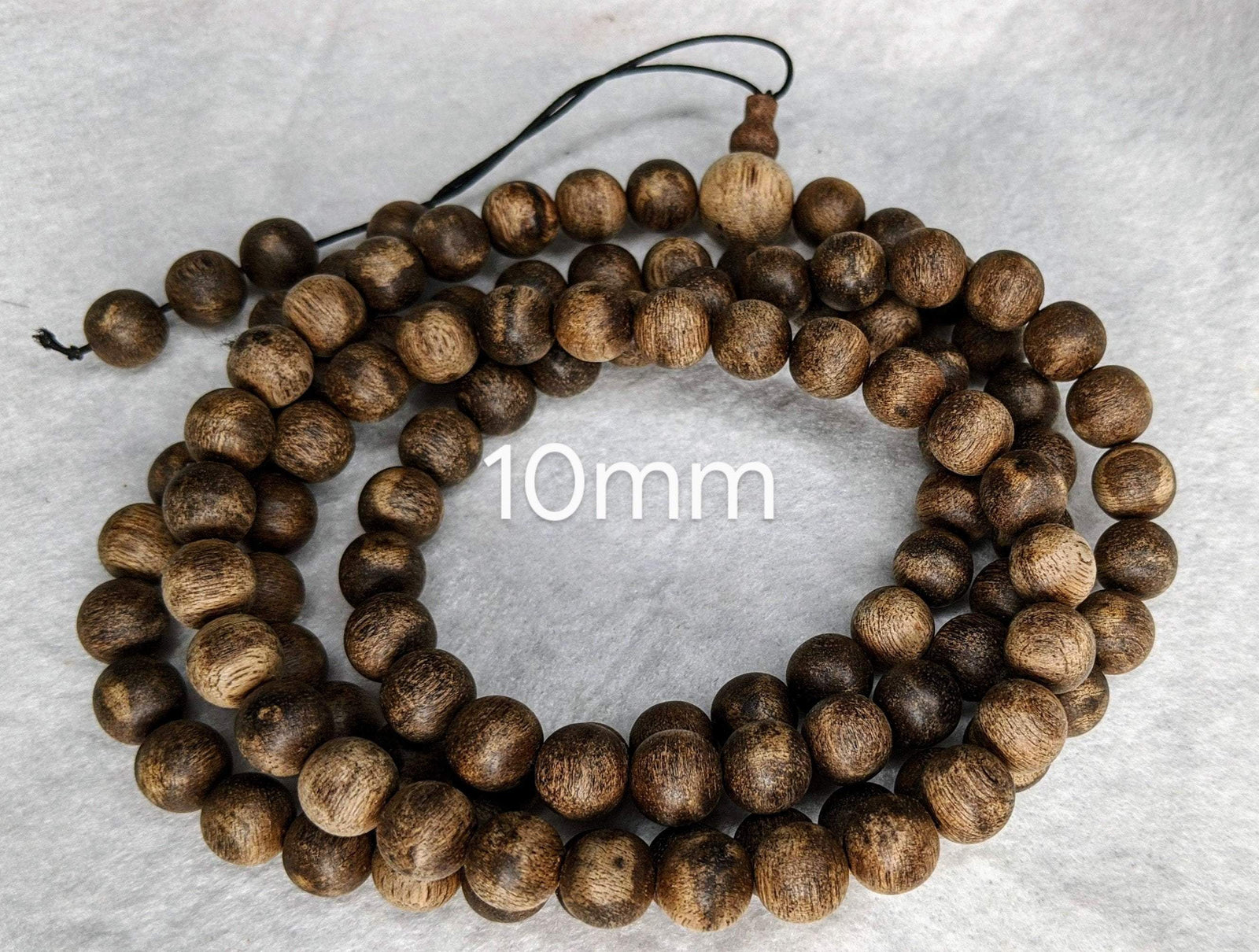
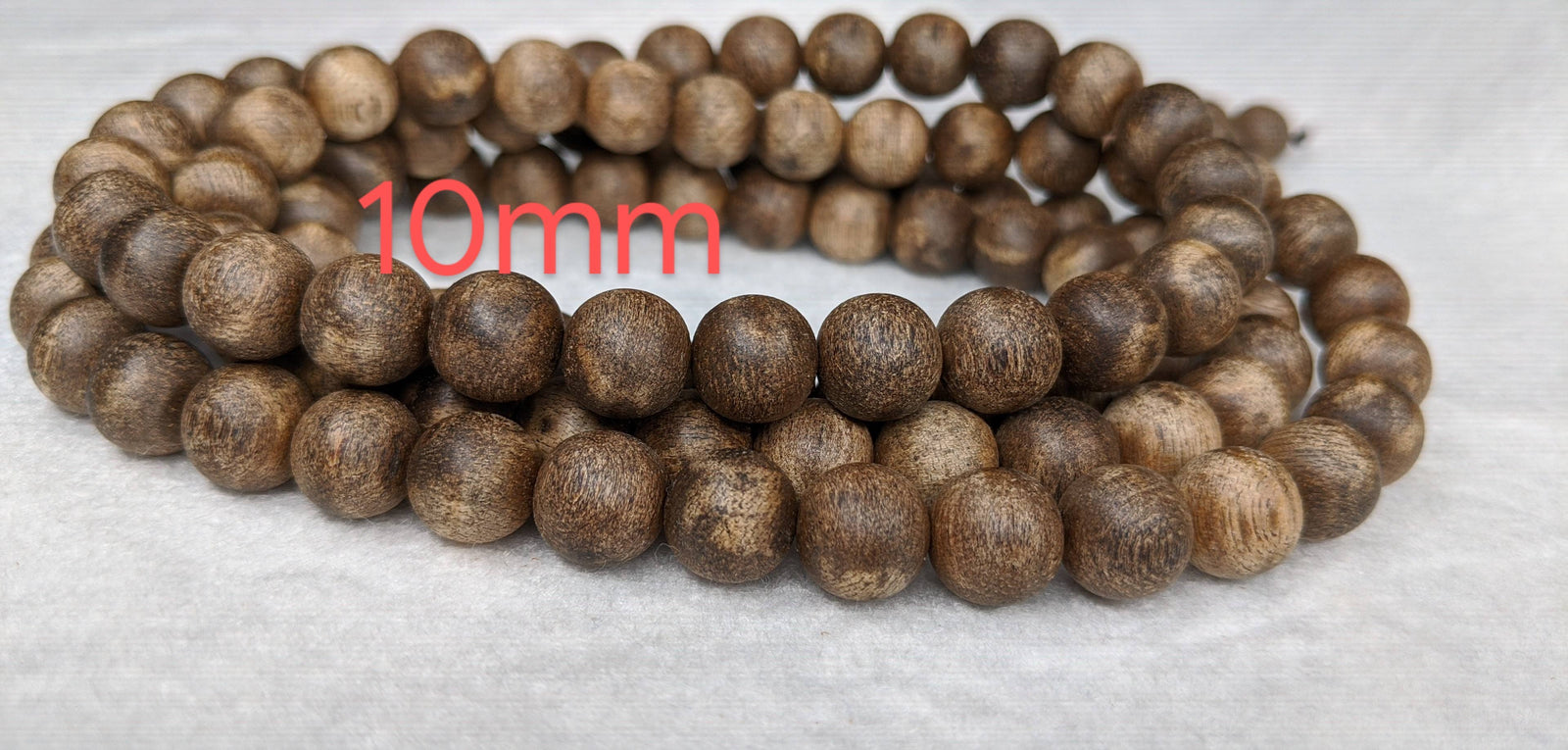
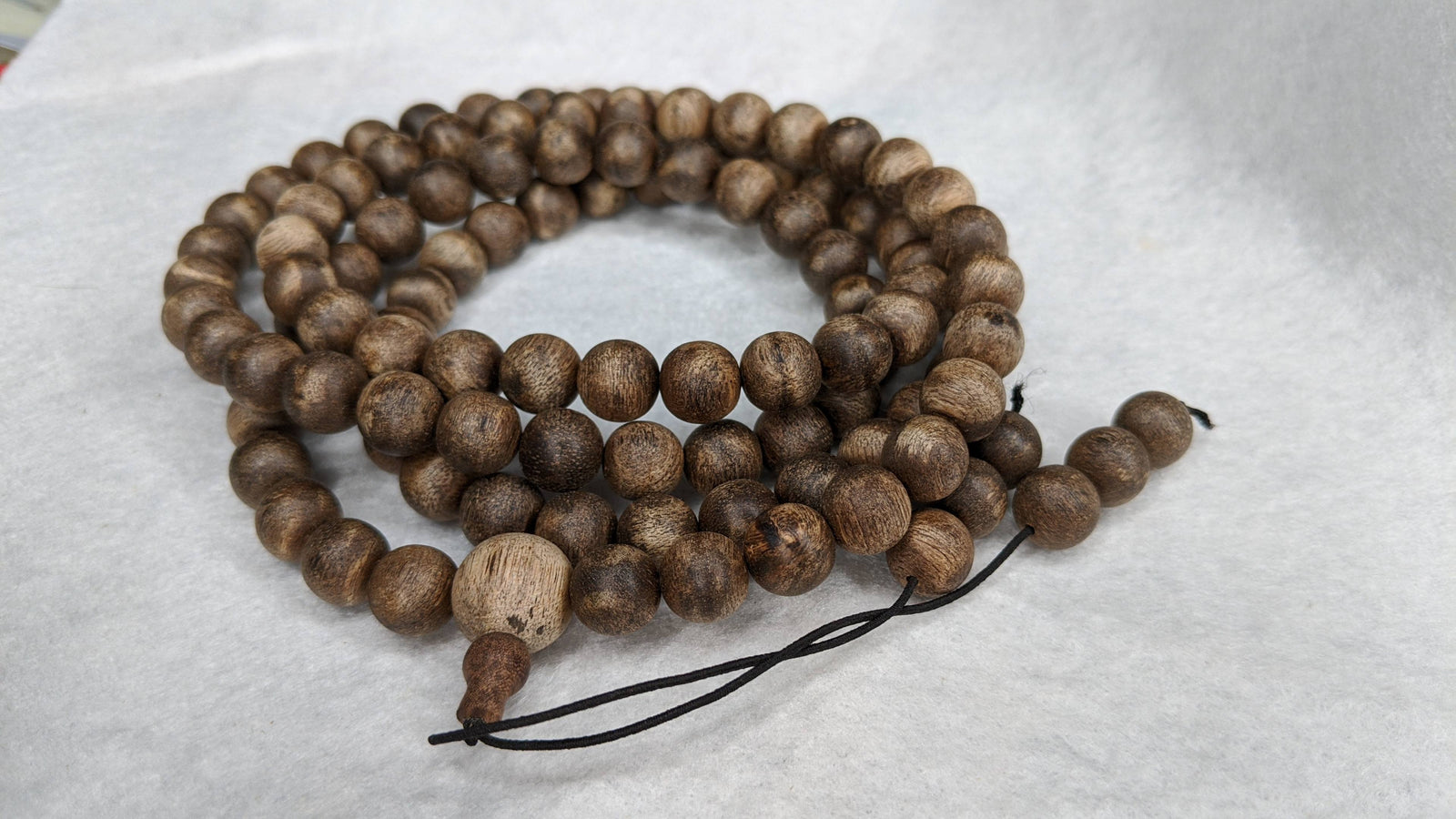
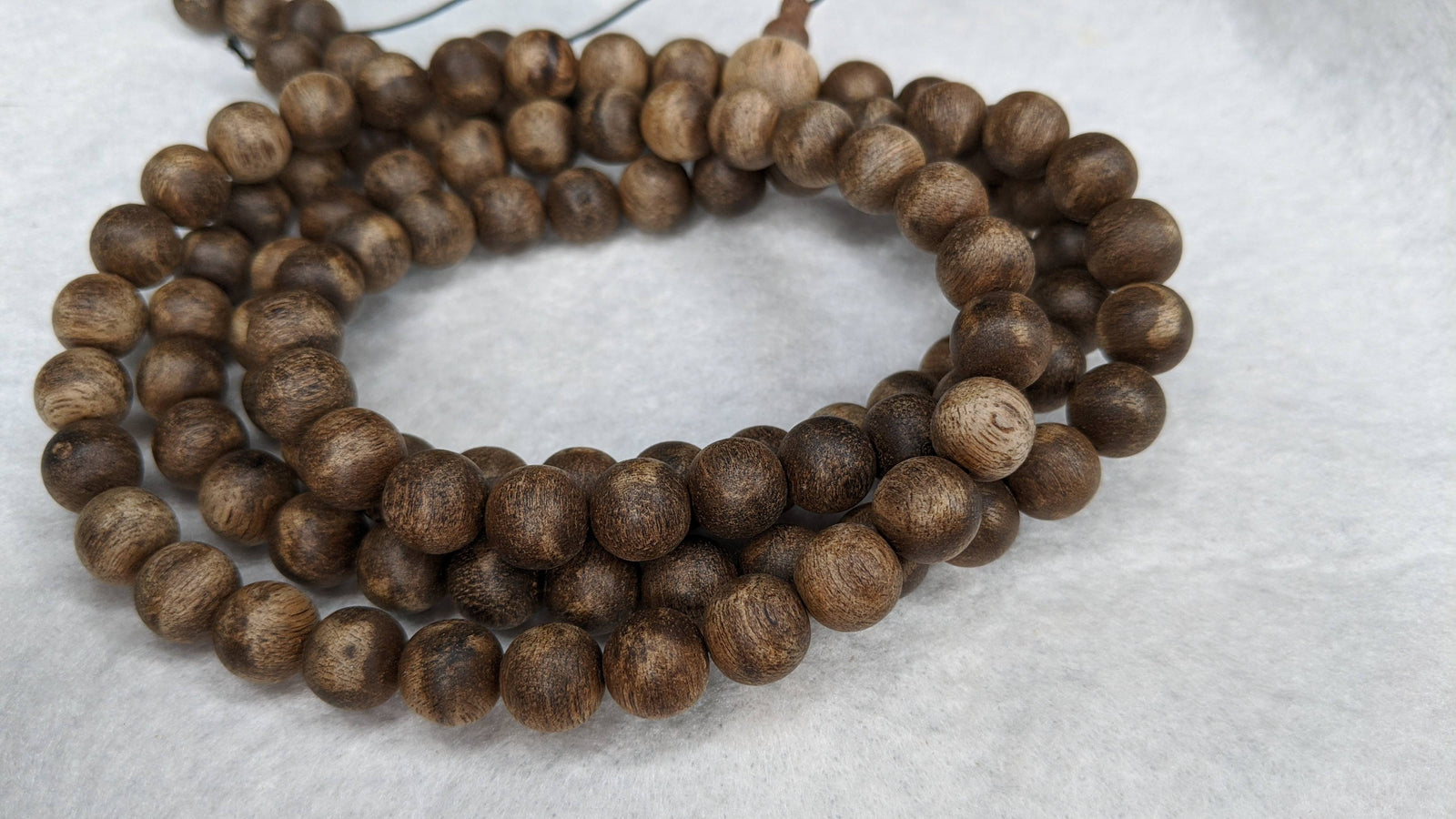
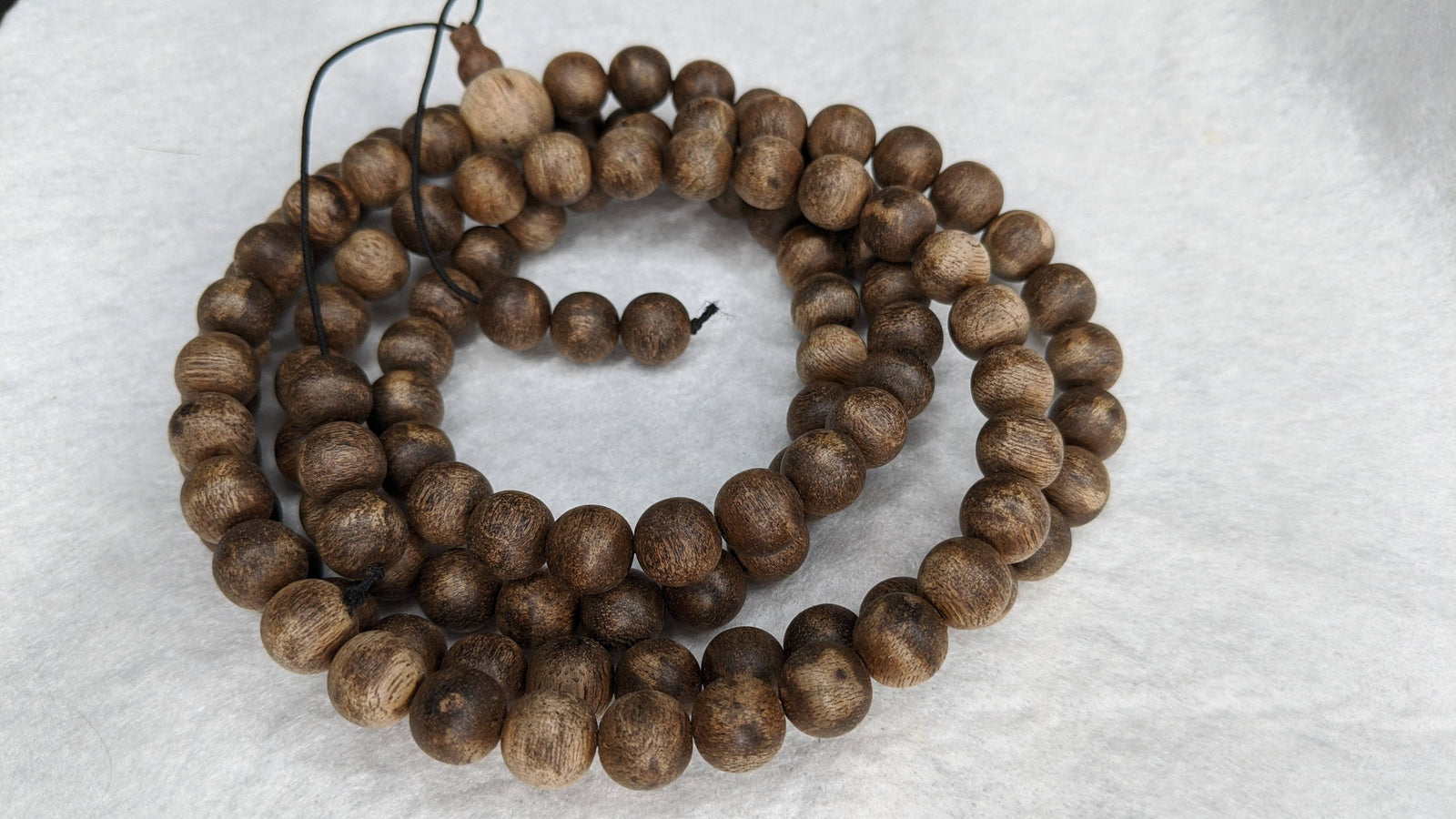
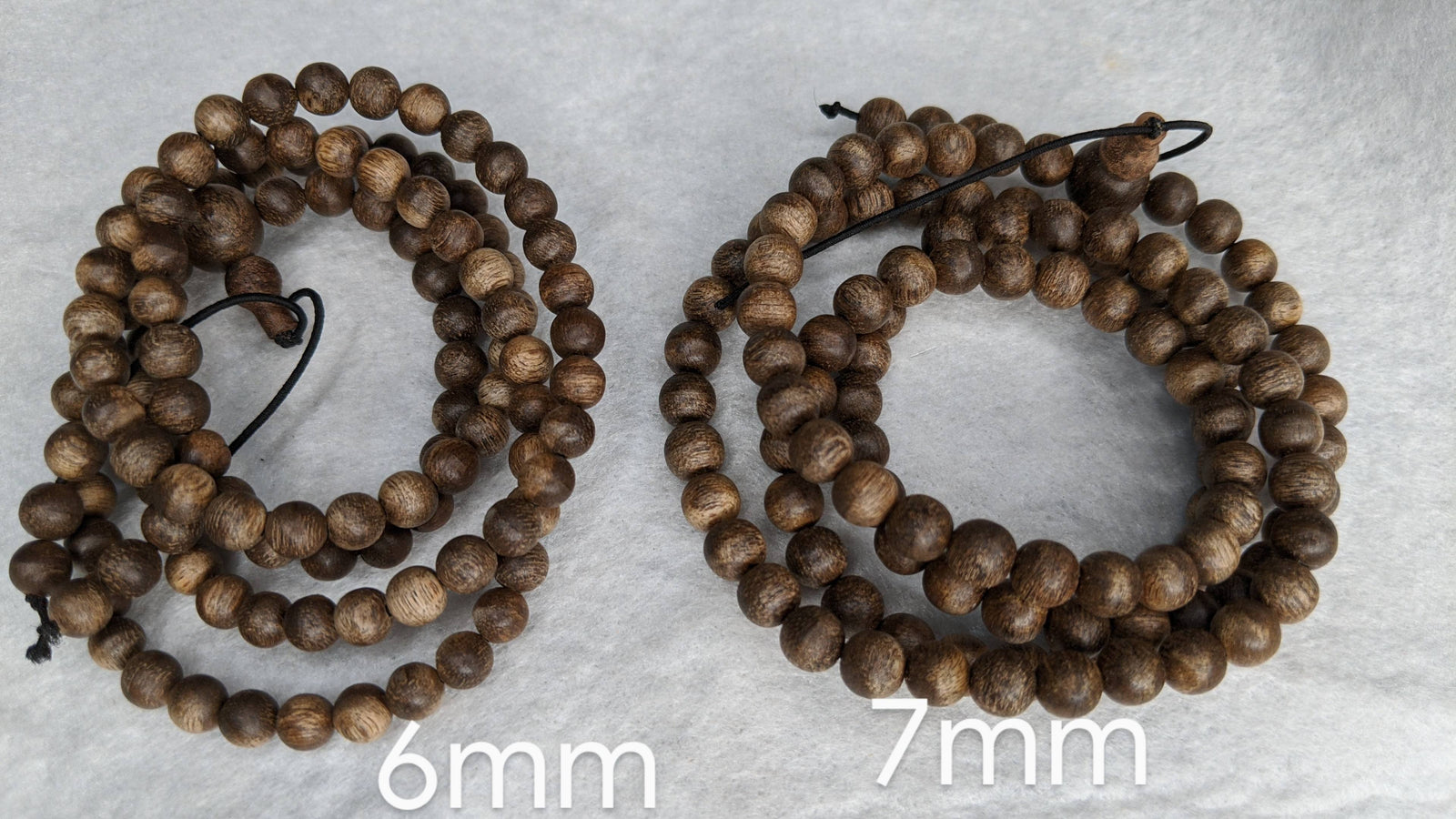
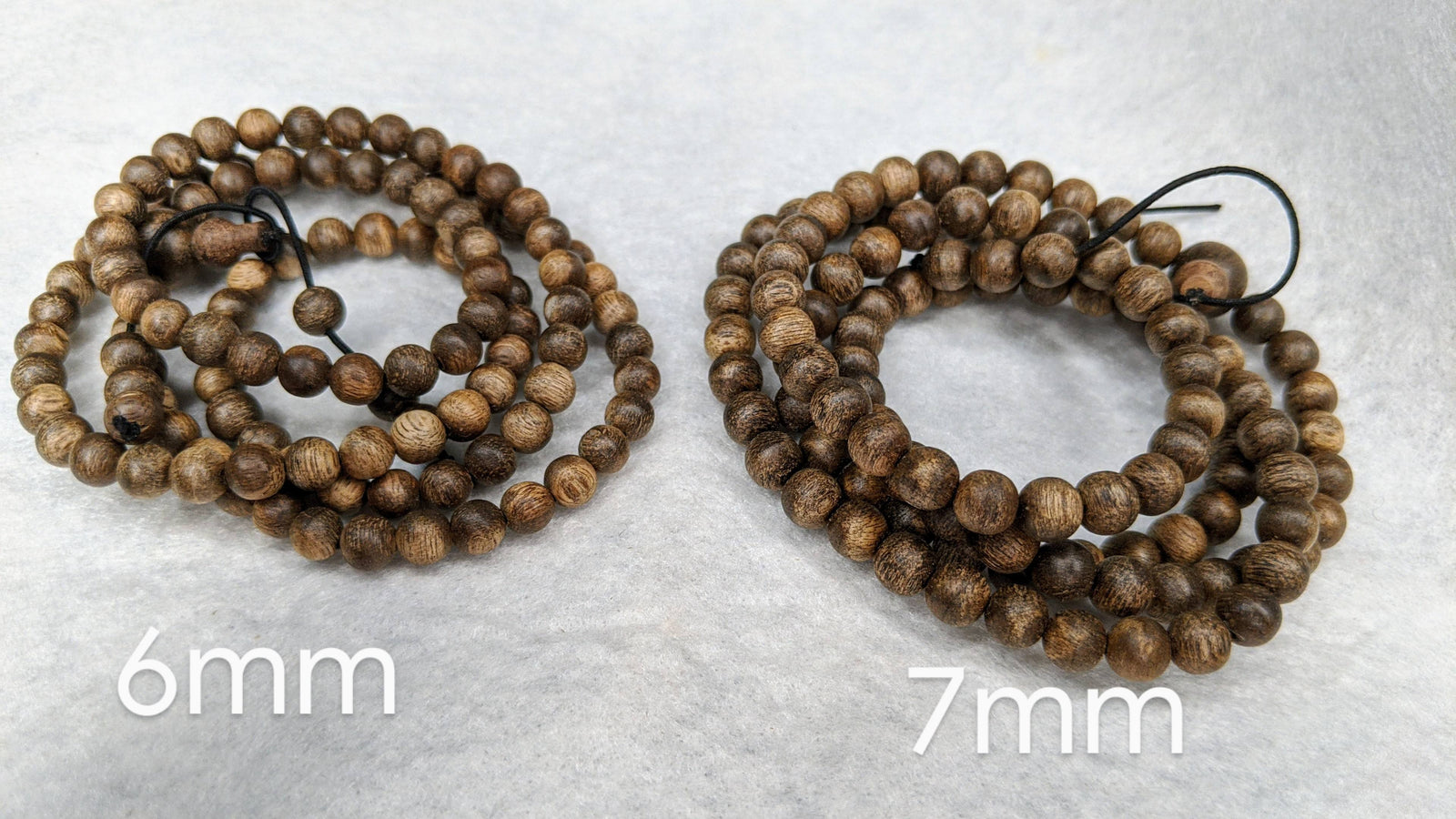
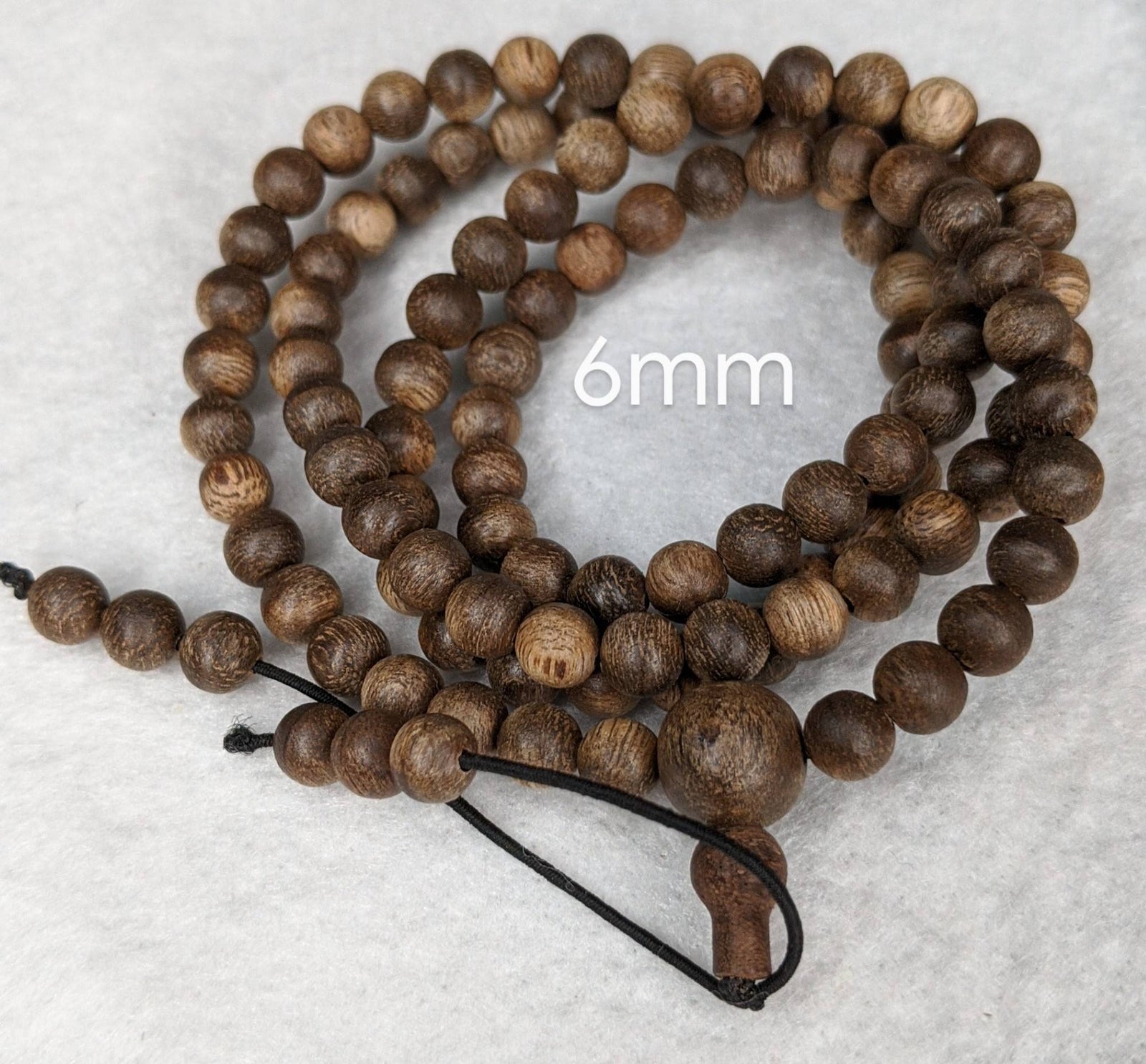
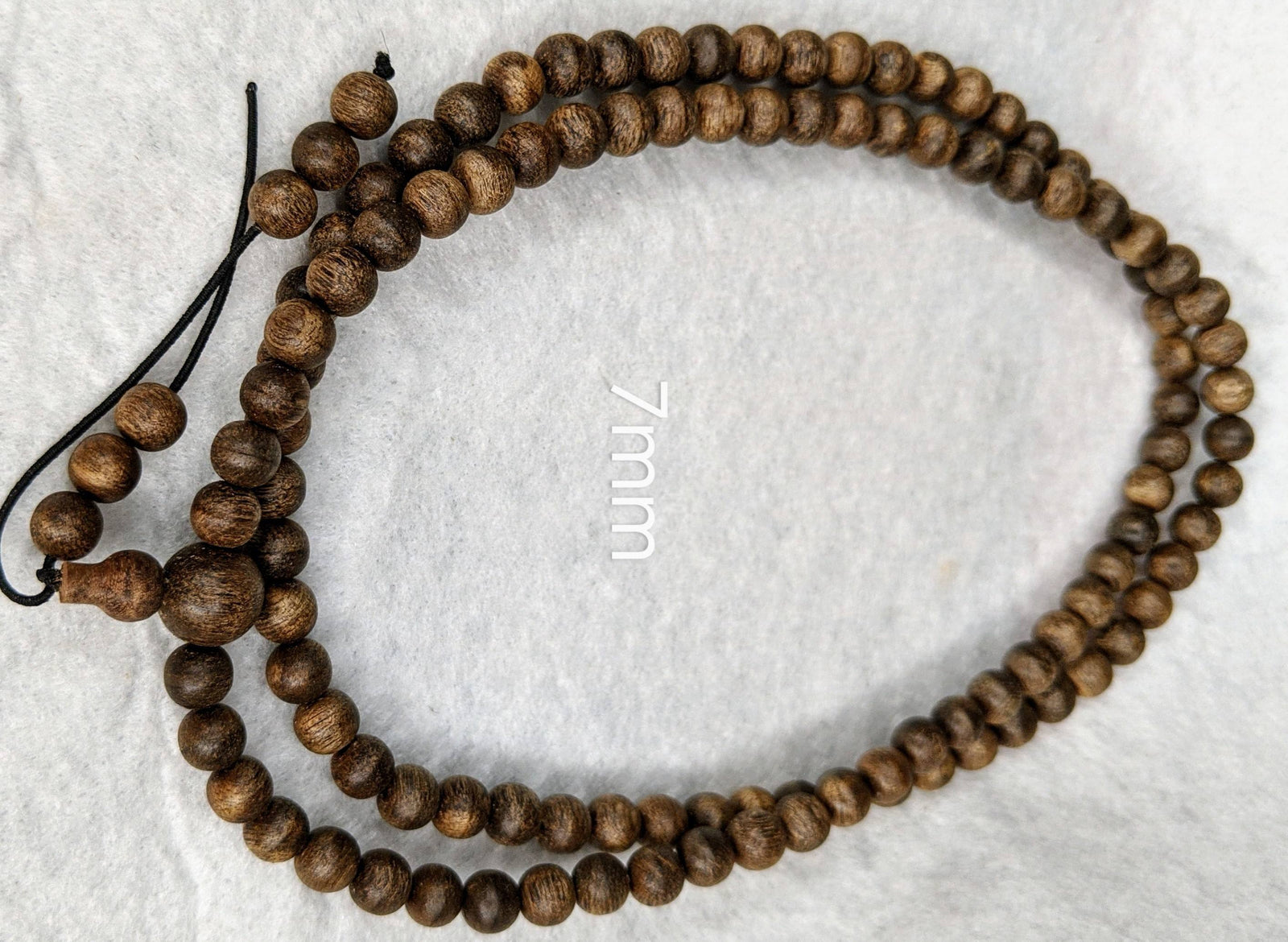
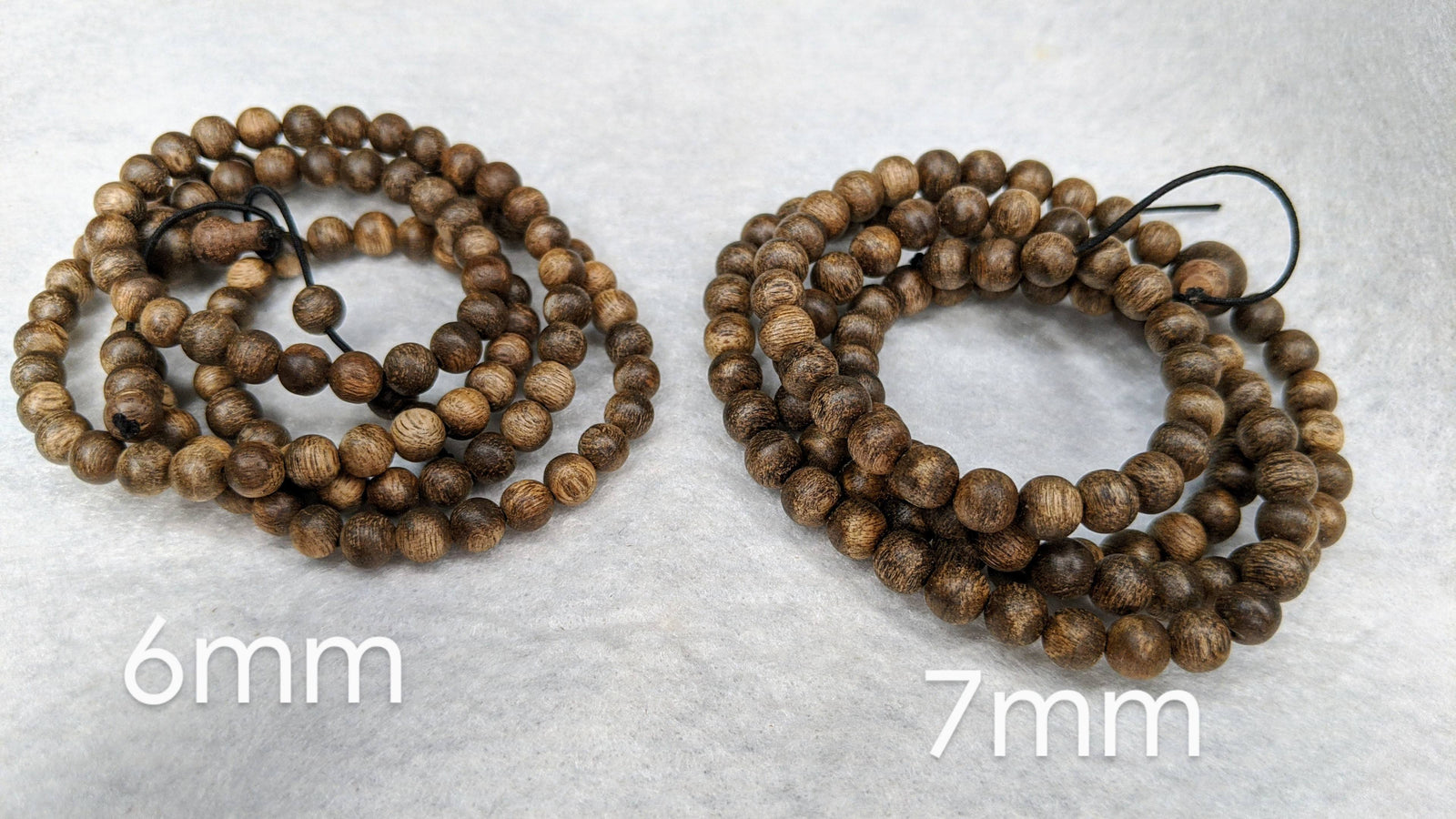
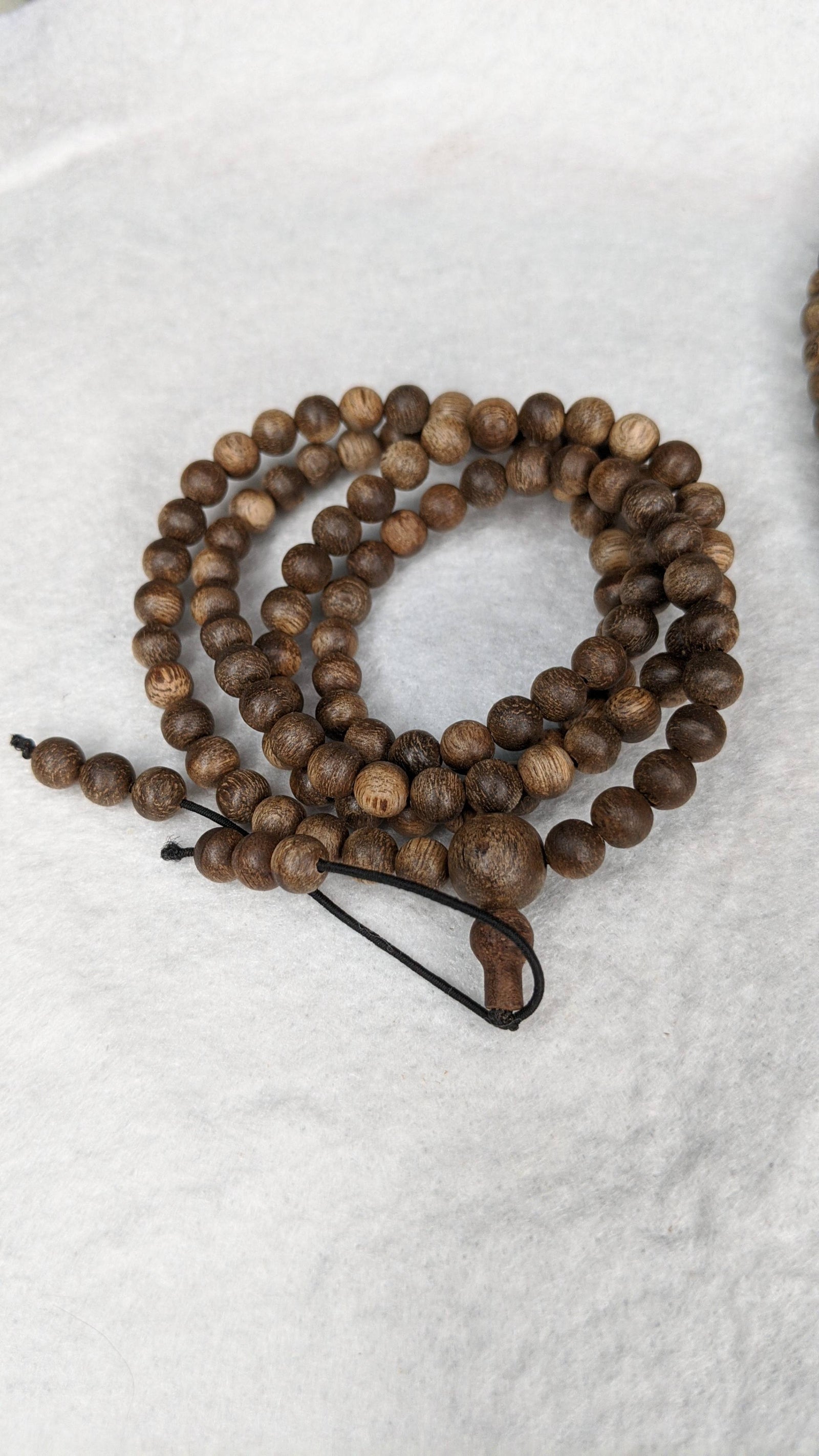
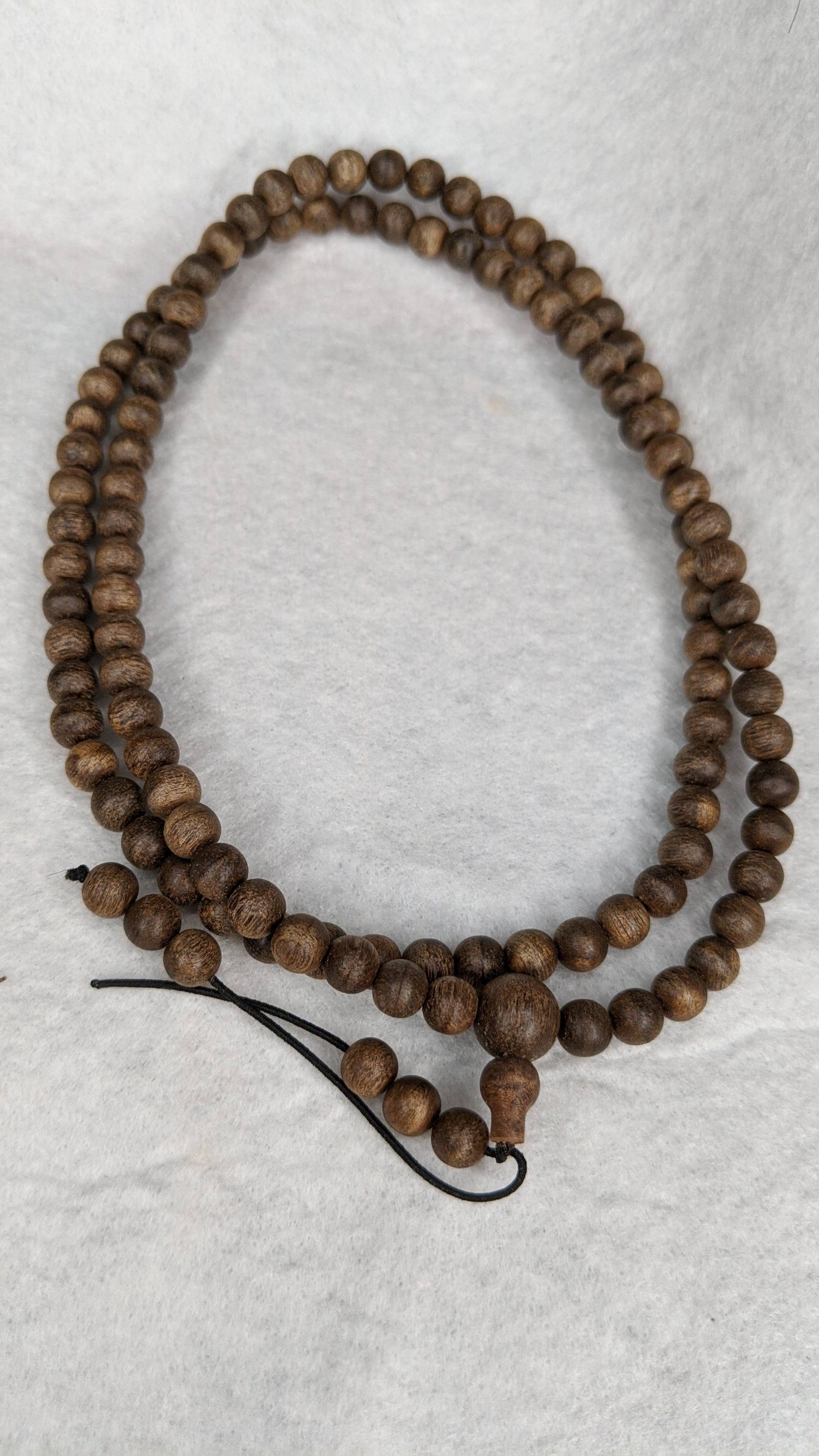
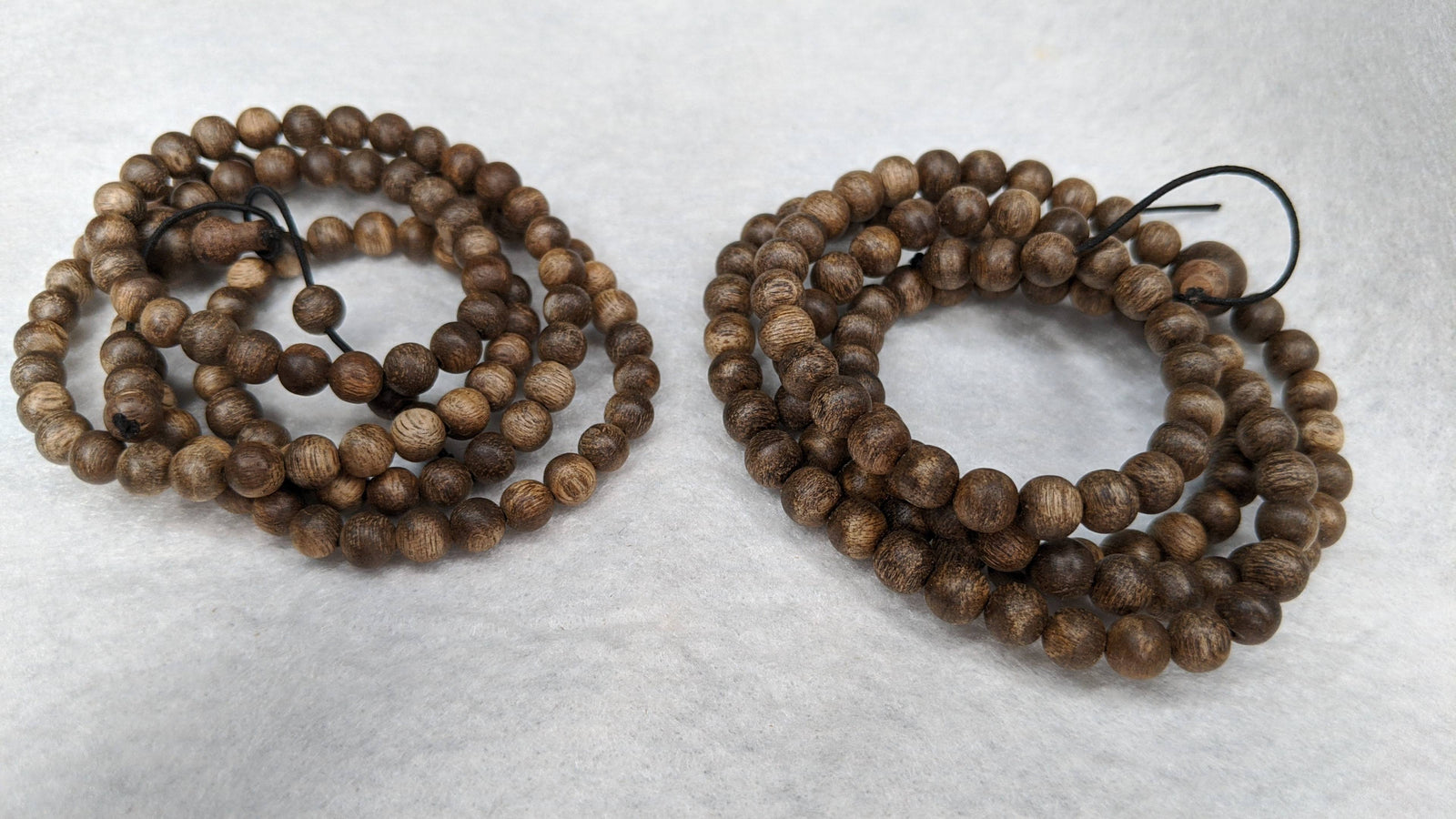
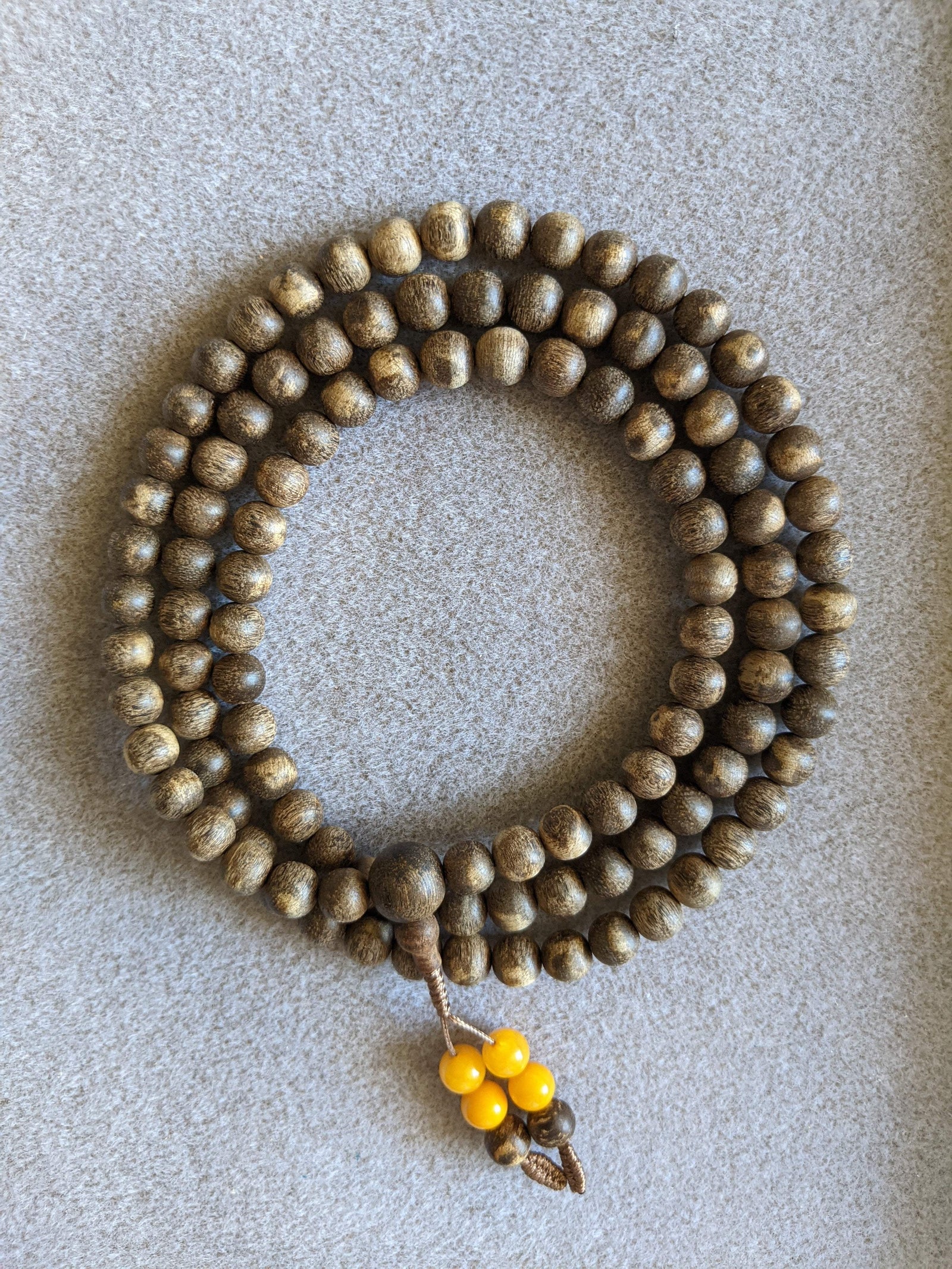
The Wiseman , Wisdom From The Elders, 108 mala made from Wild Agarwood from a small village
In South Kalimantan, Setulang village, there was a small tribe called Dayak. These Dayak villagers have been living there for many decades.

Source: Herrman, Isabell. Ritual Retellings : Luangan Healing Performances Through Practice, Berghahn Books, Incorporated, 2015
The Dayaks hunt and farm for self-consumption, also for the exchange of other needs.
The population grows steadily. For civilisation, the local government allocated each family ten lot of lands so they could grow their crops to preserve the natural resources, especially to protect the forest.
Each year, on average each family only uses one lot of land to plant and moves to the next lot after harvesting.
After the 10th lot, they go back to the first lot as a cycle. By this time, the first lot is fertilised naturally.
For a while, the Setulang villagers have been following it.
But things have changed
Especially with the development of technology in agriculture
With the use of fertilisers, farmers do not need to rest their lands for years after harvesting. They can use the same land to grow crops seasons after seasons.

Source: Pixabay keulefm
Among the villagers, Kom is a farmer and a father of three. His two youngers son are also farmers; they are twin named Ferdi and Mang. His eldest son is Manik, who has been helping his family farming, is a hunter. He comes and goes to a different area to trade several things and to hunt deer and wild boars. This month he is in the South of Kalimantan, next week he could be in the West.
Just like other villagers, Kom’s family was allocated ten lots of land for many decades.
They have been growing rice on four lot of lands for many years.
But this year, some rice traders approached them to grow more rice so they could get more.
So in September, after harvesting the 4th lot and re-fertilising all of the fours, the Kom’s family started to explore the 5th lot to make another rice paddy field. This new lot was still green. Many trees have been there for God know how long.
Because to grow rice which is semi-aquatic, the field needed to be lightly flooded, Unfortunately, most trees on this land had to go.
One day, while making space for the land lot for rice farming, Manik’s eyes latched on a particular tree. He estimated the height of this tree was around the height of 8 adults combined.
This tree had been on this lot for a long time, but no one had ever paid attention because it was the tradition of the Dayak tribe to protect the trees. They only cut down a tree when necessary even the tree was on their own land.
As an experienced hunter, Manik's eyes were wide-open because he knew this was an Aquilaria tree; the local called it gaharu. So he came closer to examine the trees.
After confirming this, Manik told his Dad to rest this season because he could hire two local guys to help his family to cultivate their rice for this season. He just needed to sell this tree.
Kom, his Dad is around his 60, is still fit and healthy. But Manik insisted him to work a bit less and enjoyed his time.
"Dad, you have been working hard your whole life, take some rest as we have an Aquilaria tree here. I will sell it so you could work less".
So, he contacted his circles: several agarwood traders to sell it. Among those traders was Fai, who is my friend for years.
Fai asked if he could see the tree, but Manik said he already cleaned the wood and sold most parts of it.
"Where are the rest of them?" Fai asked
"Gone, I don't know, the other guys came, bought and disappeared. But I save some of the hard parts for you. Because I know you want to make some beads" Manik answered.
There were only several small logs left.
So Fai examined the wood, and he selected the best parts for bead making.



Appearance
Usually, with wood jewellery, the maker buffed the wood surface to ensure the “smoothest” possible. This practice also creates a glossy, shiny effect on the beads.
Initially, I thought it would be a way to go, but Fai told me the buffing process would “even out” the “grains” or agarwood patterns. And that would be a waste if the material is resinous.
“That makes sense. So, what should I do?”
Fai explained one way to preserve this unique feature of this log; it would be best to polish lightly
To goal is to the “grains” (the patterns) so that the wearer could feel the “bumpiness” in each bead.
You probably have already noticed of the rusty look of these beads. Chances are you might not have seen it before because this is the first attempt to create this unique look.
We can only make four 108 mala out of what we have on hand
There will be 3 options to choose from.
Please these beads are all hand-made individually, one bead by one bead.
It takes hours and hours of work to cut and make all the beads.
Option one: You will get TWO mala: 1 x 6mm 9g and 1 x 7mm 14g
You read it right. You get 2 mala if you select this option
The dimension of the first one is 6mm, and the second one is 7mm
If you are a couple, will you share the love?

Option two: 1 x 108 mala: 8mm 28g
8mm: the most common size of a mala but with a unique rusty look. Wear it or keepsake? Your choice.

Option three: 1 x 10mm 45g
This is a giant one. 10mm
We wanted to create something one of a lifetime so we made this
If you had an altar at home to worship and you prayed often, then this mala would be suitable for that purpose.
It is very visual and catches your attention or any other people around you



